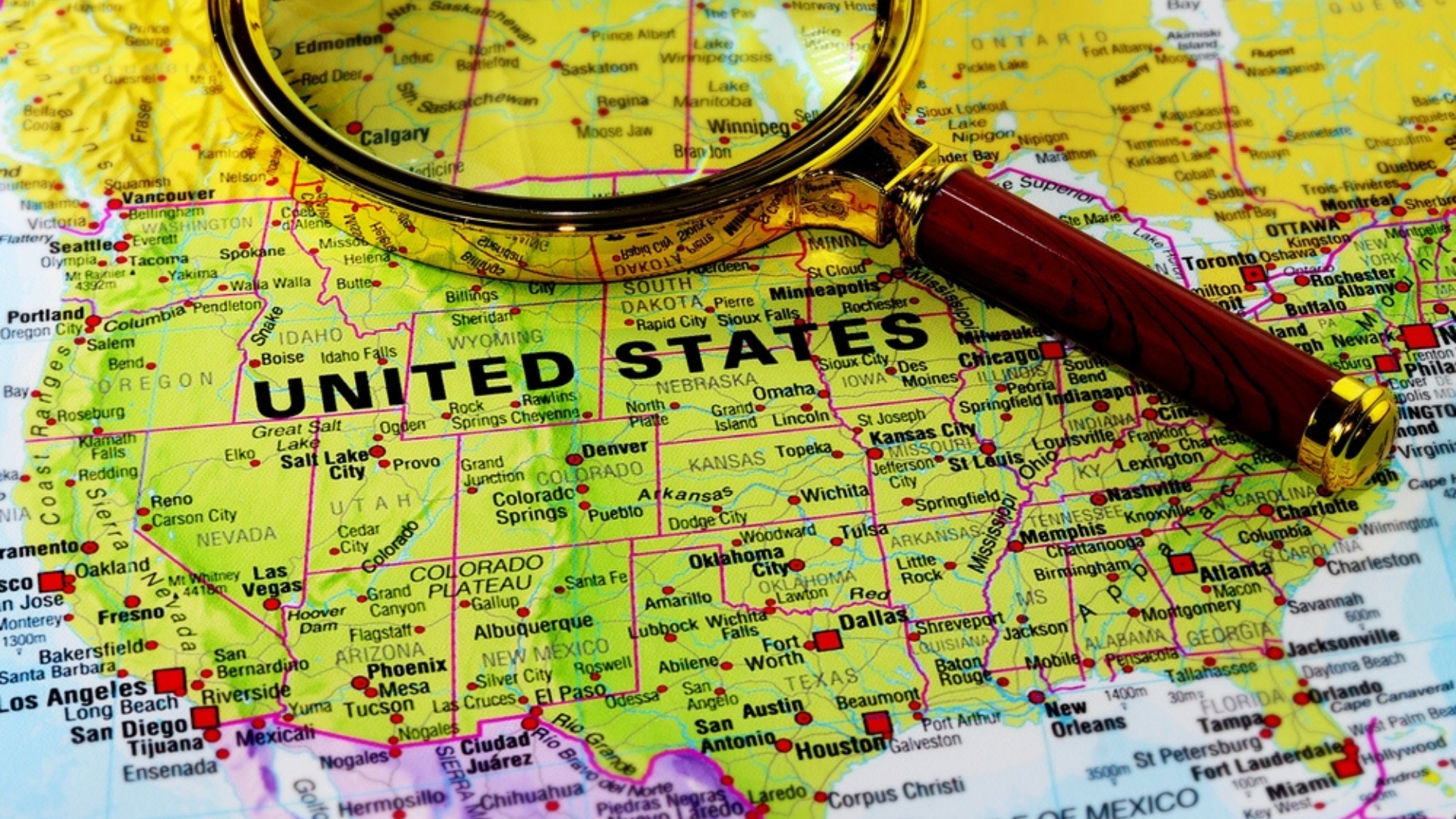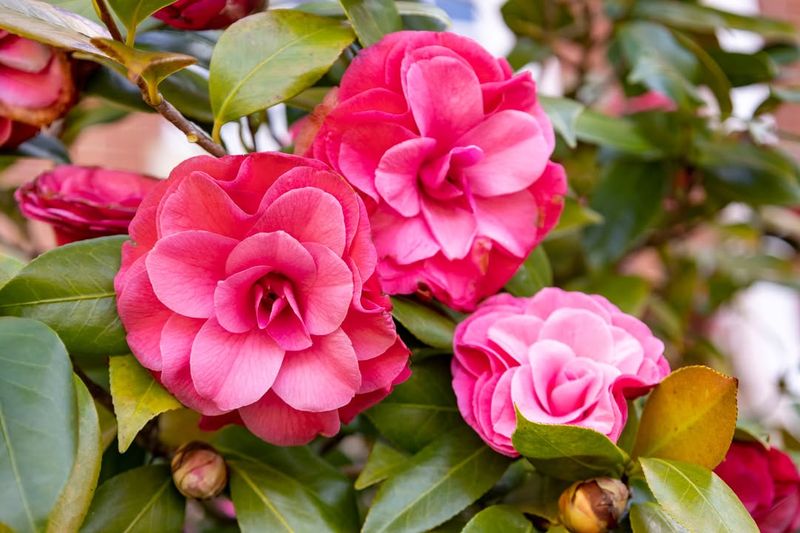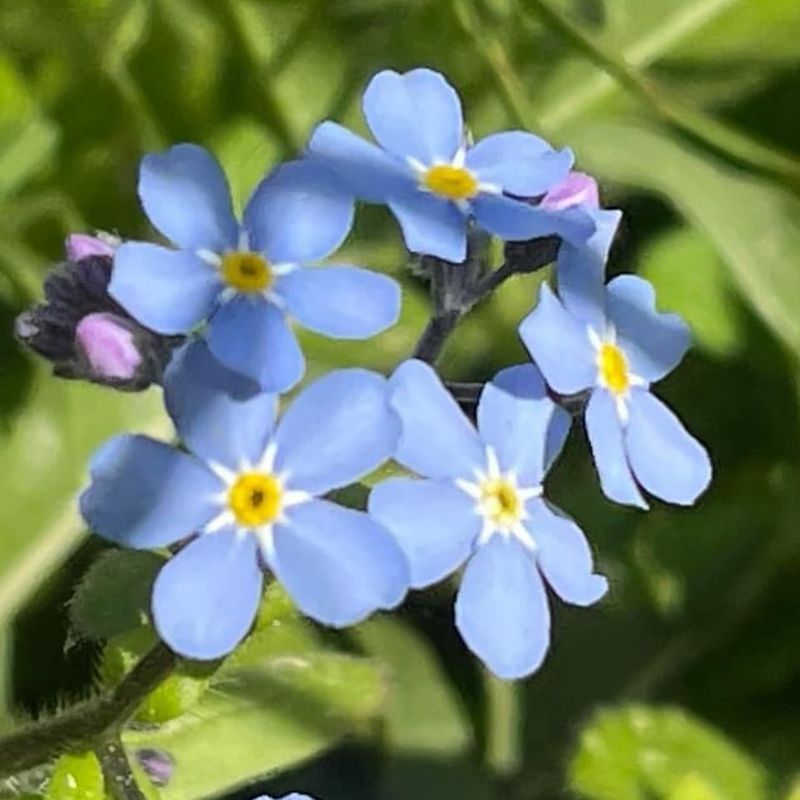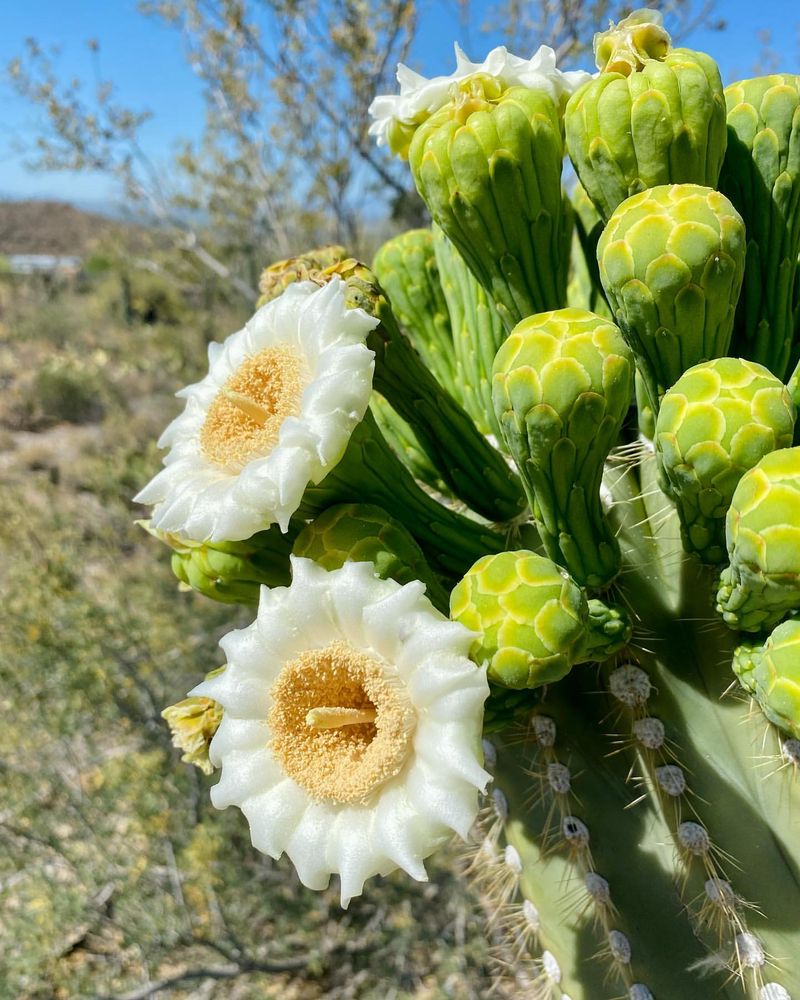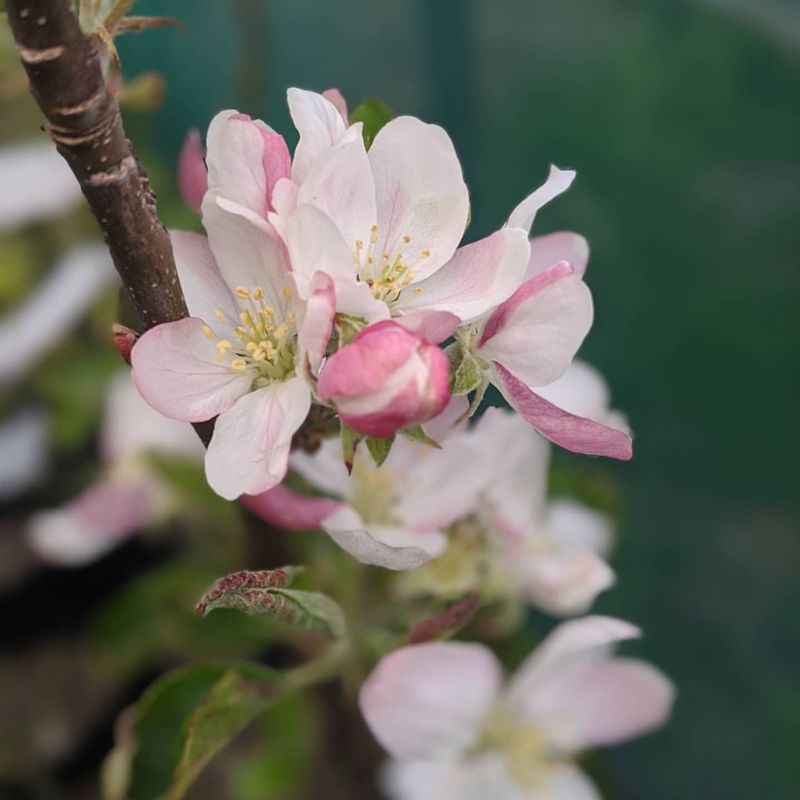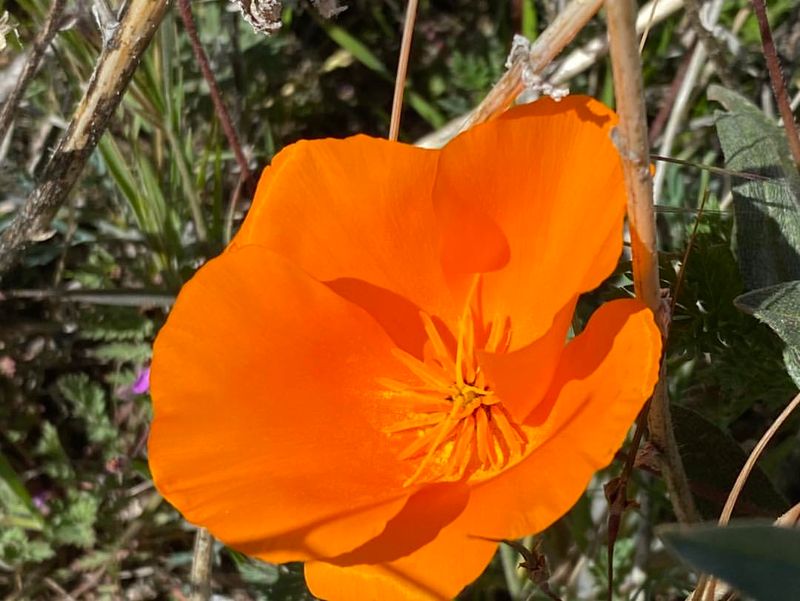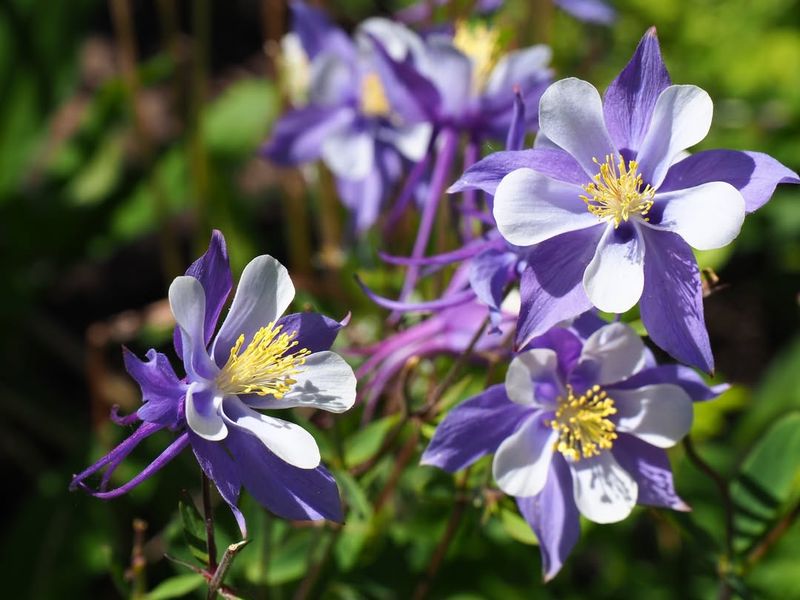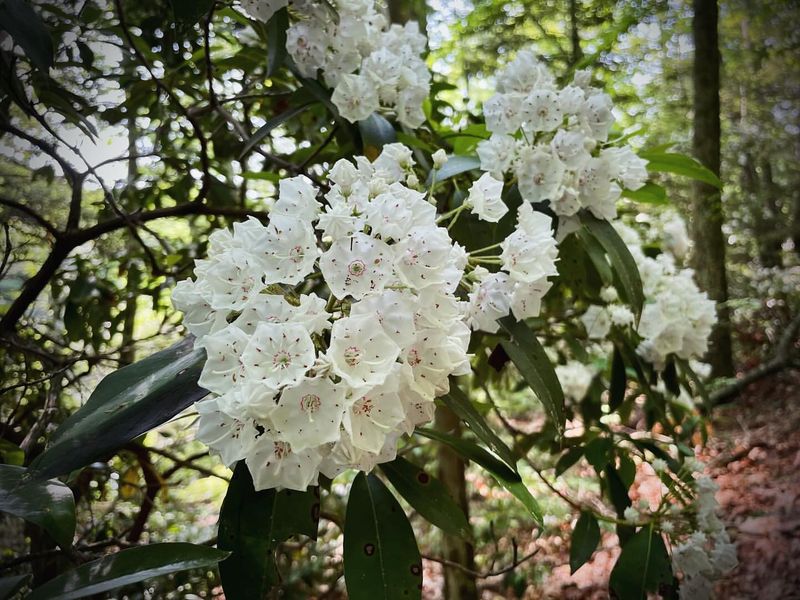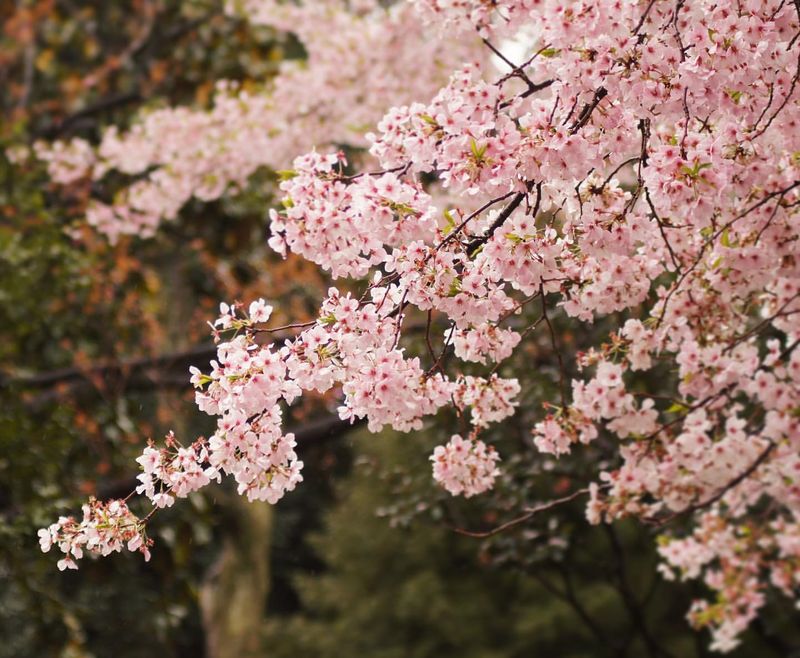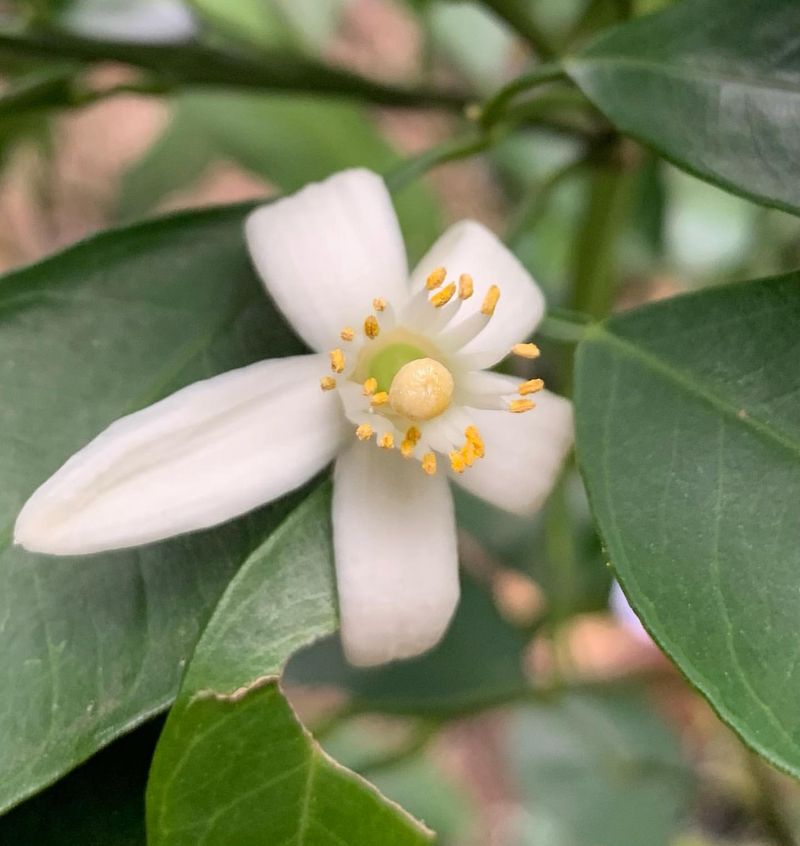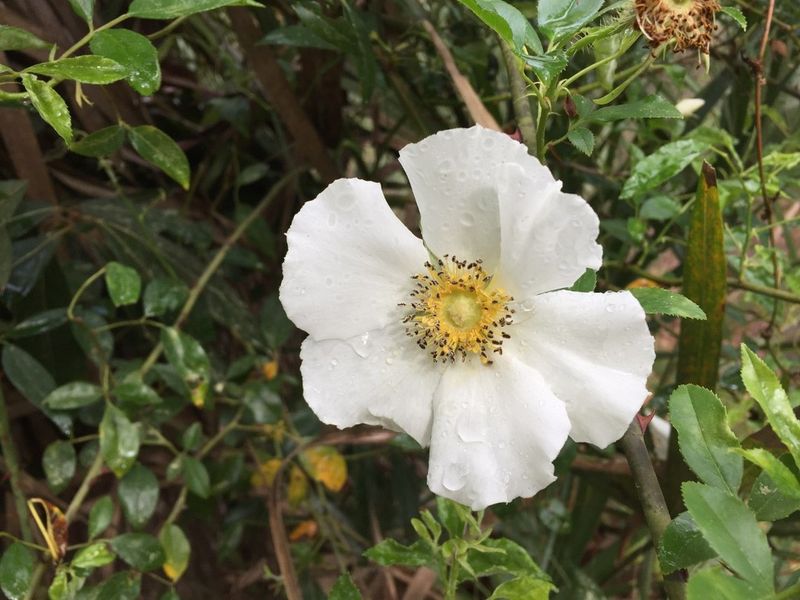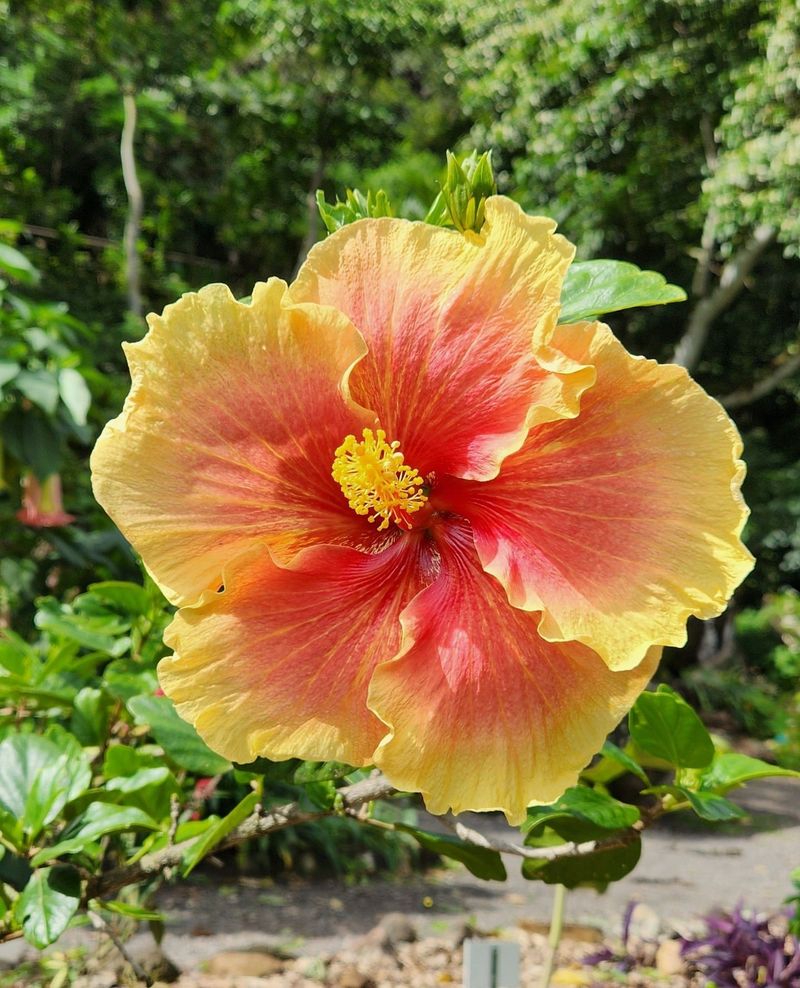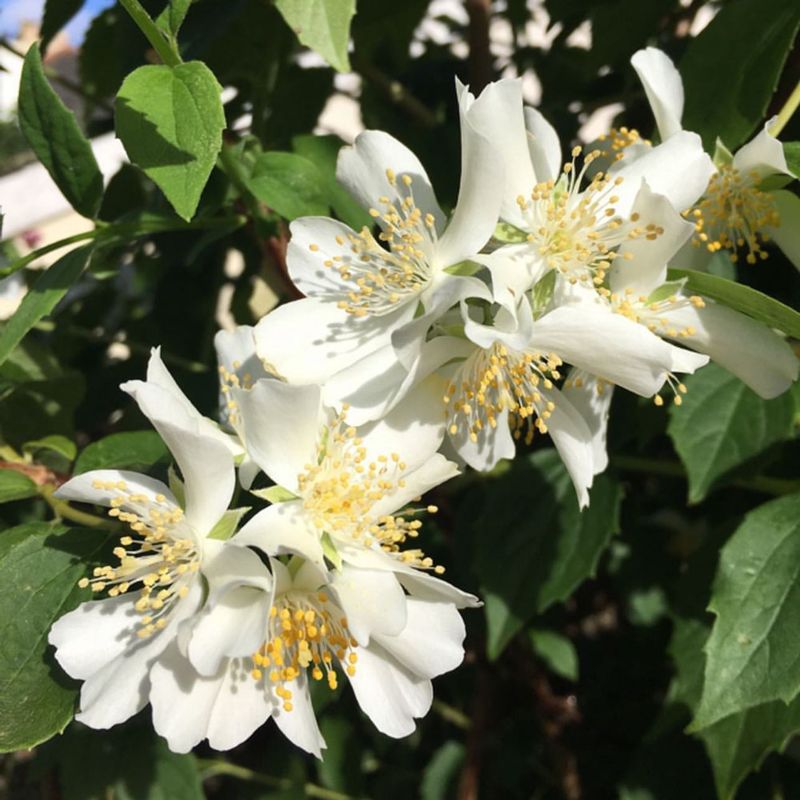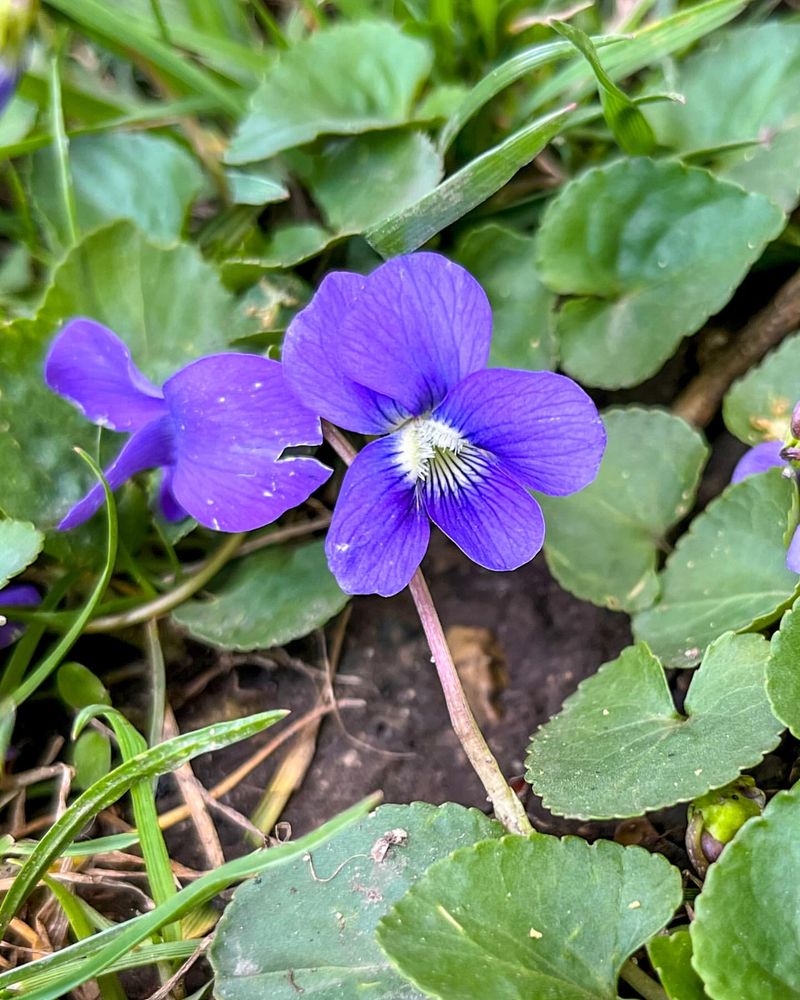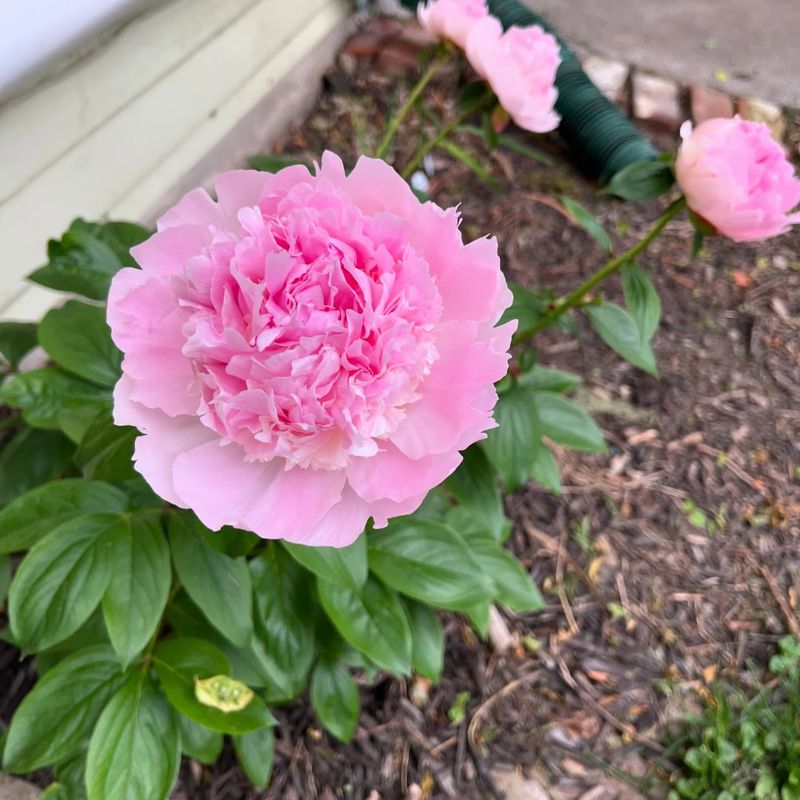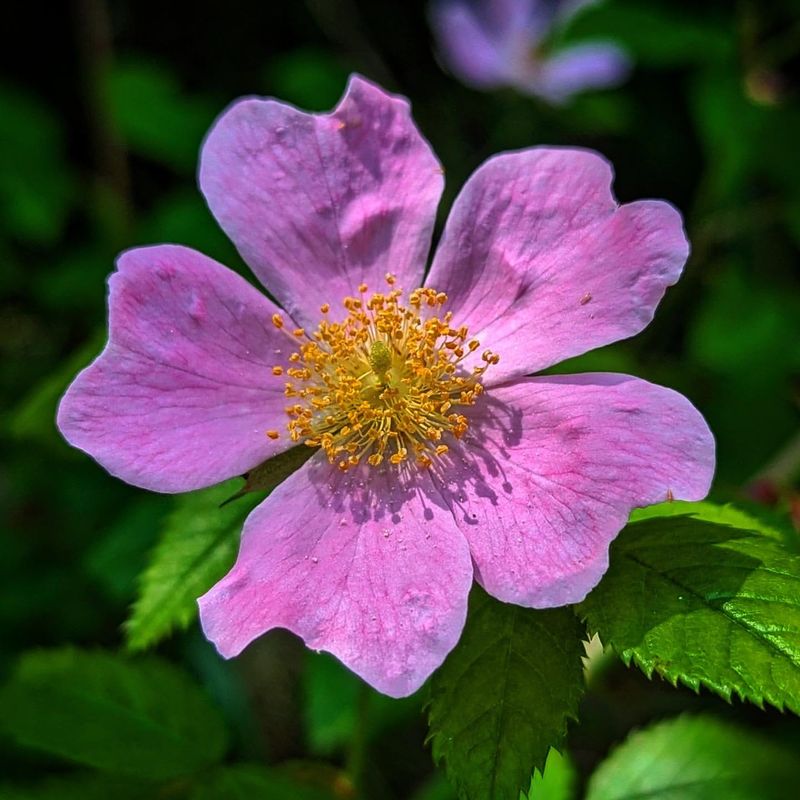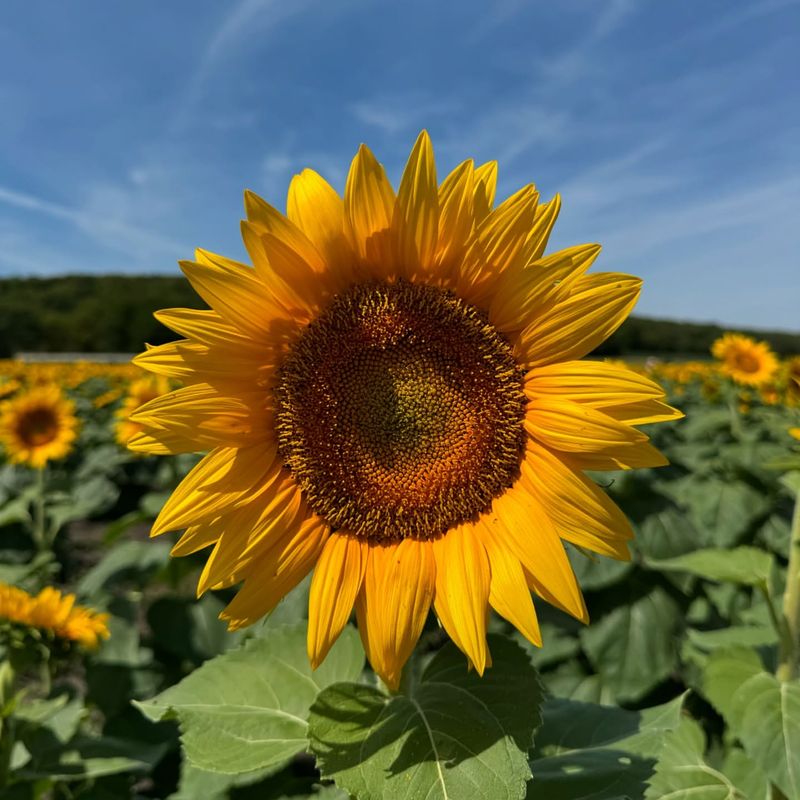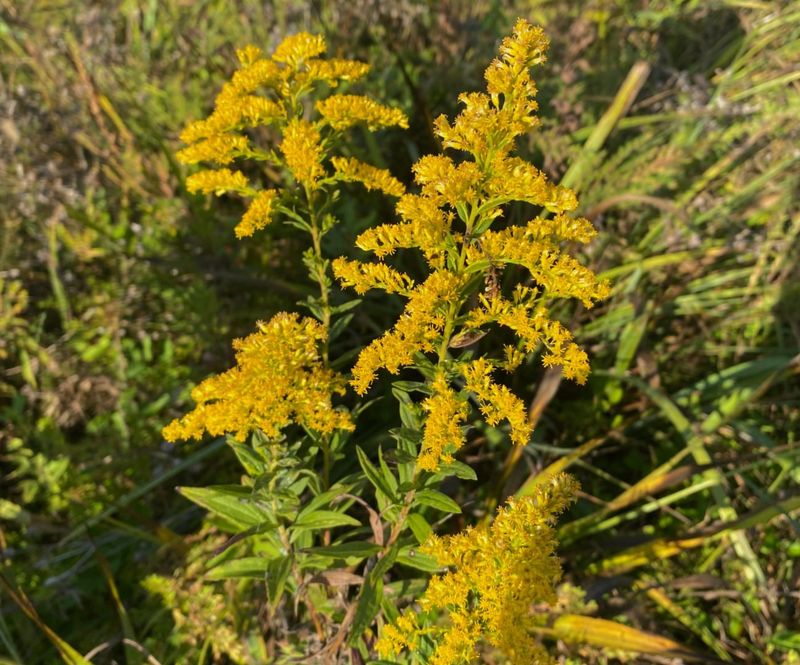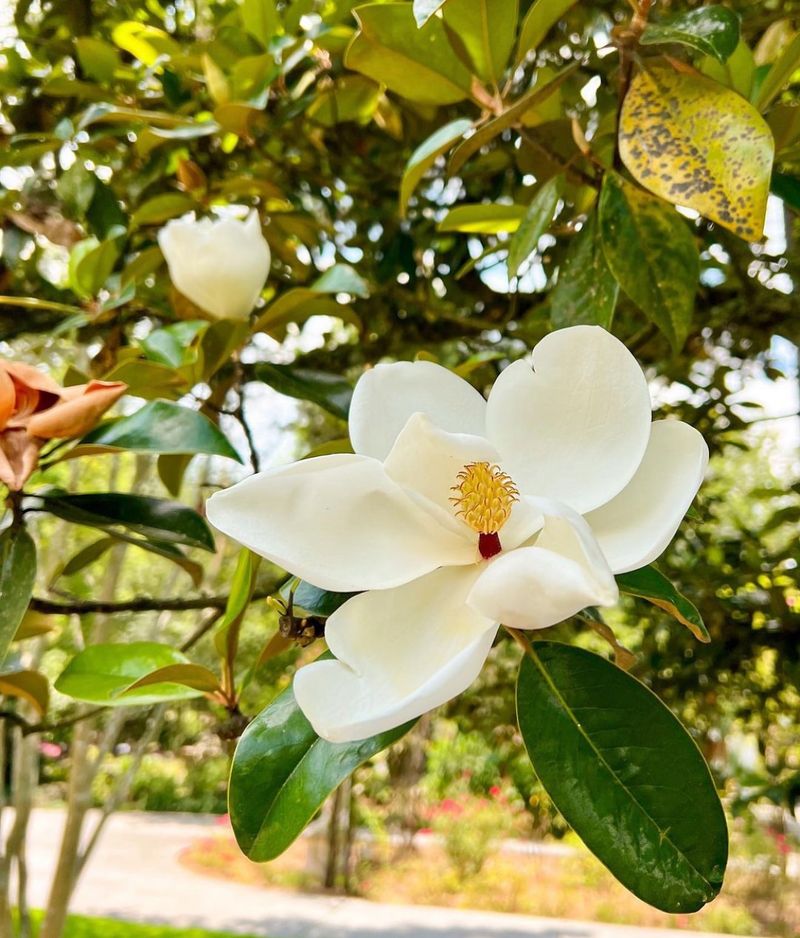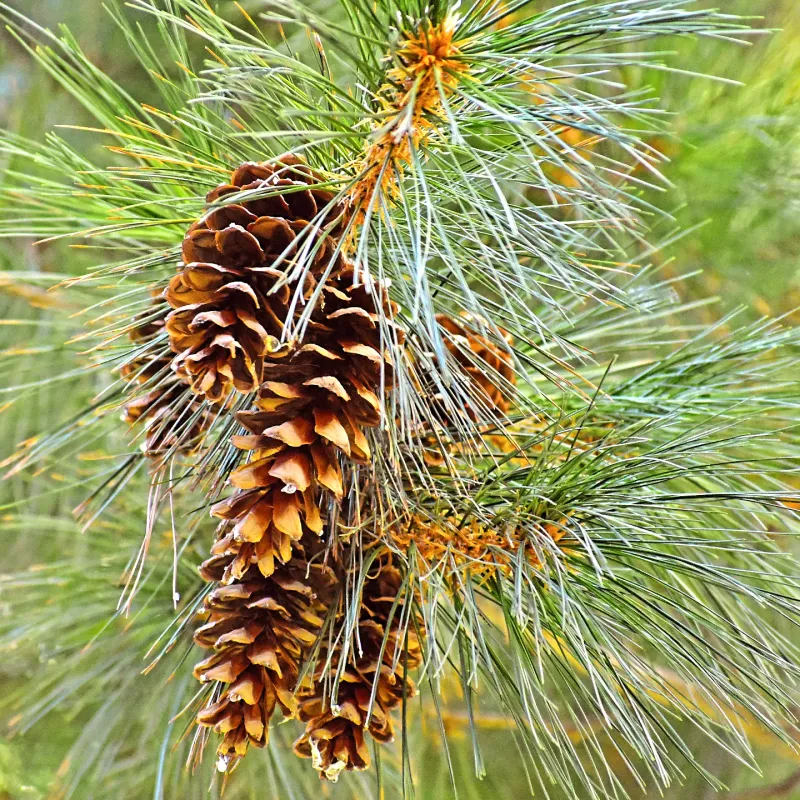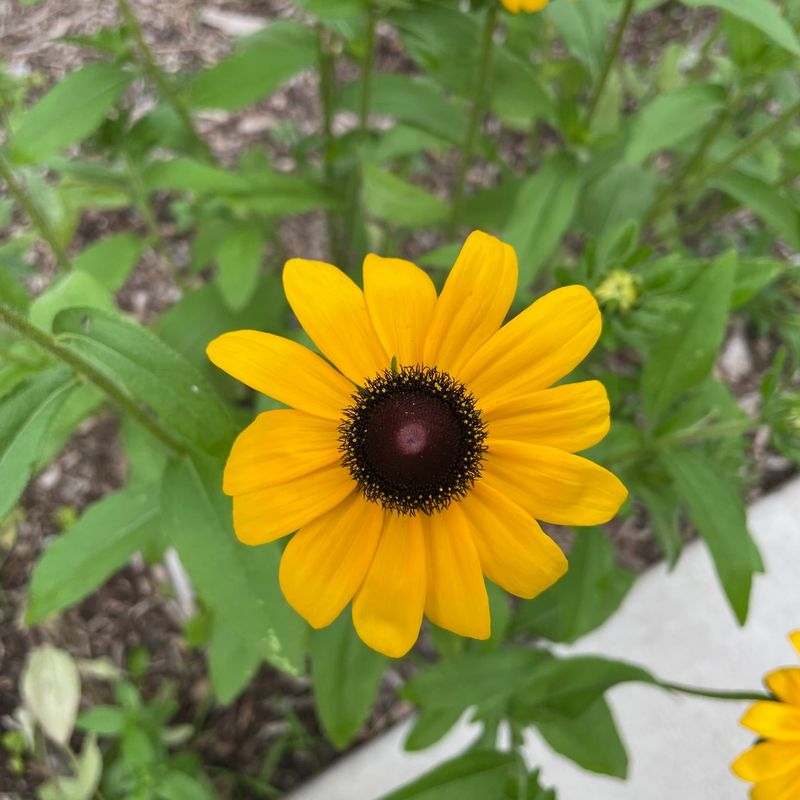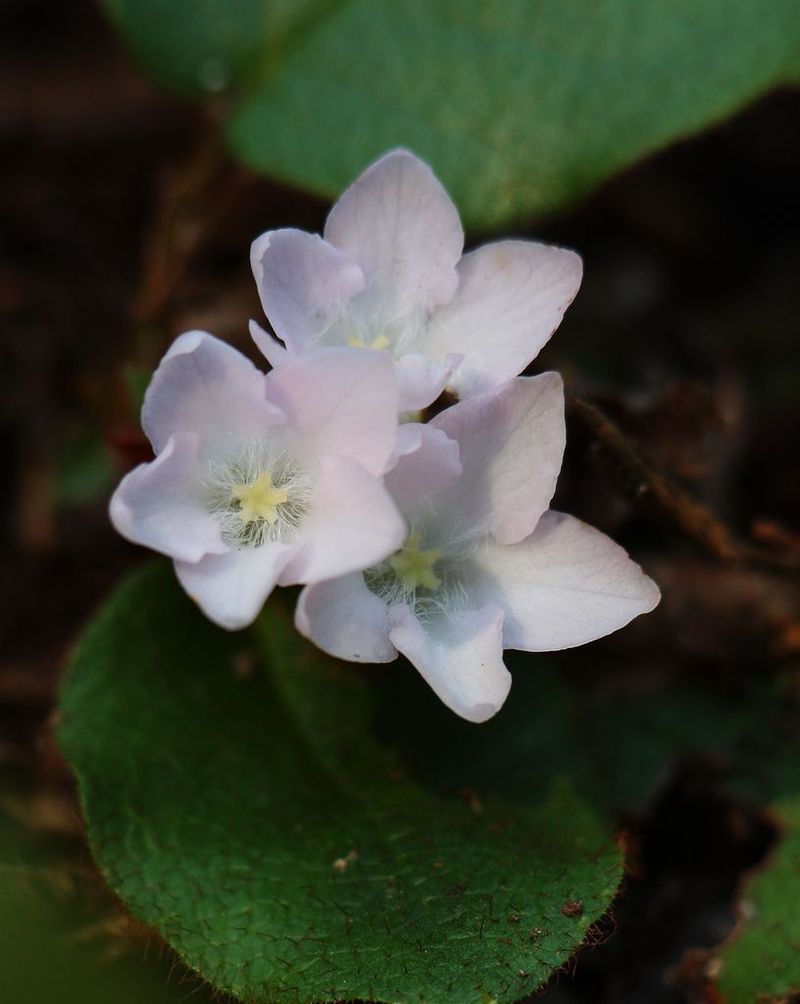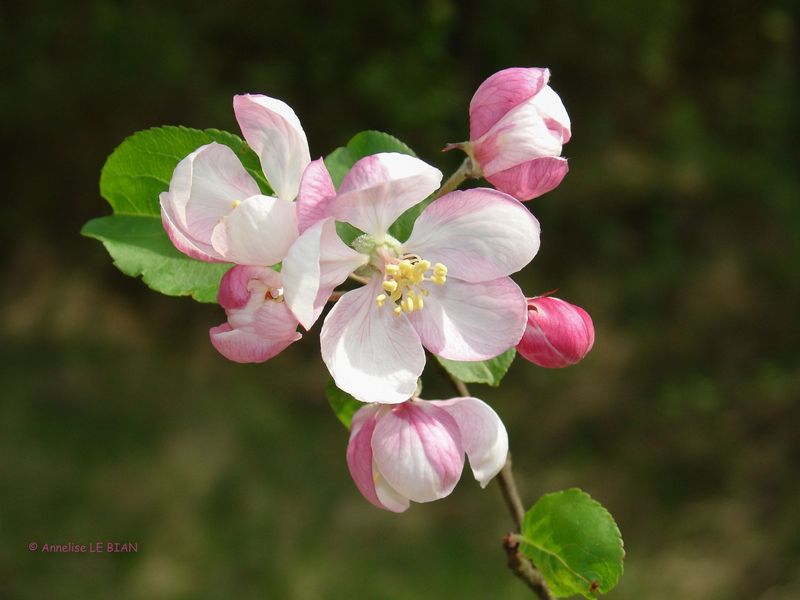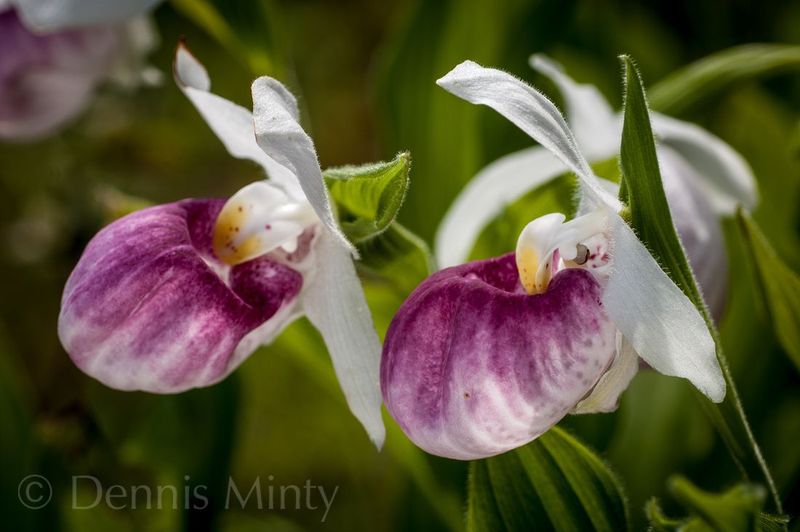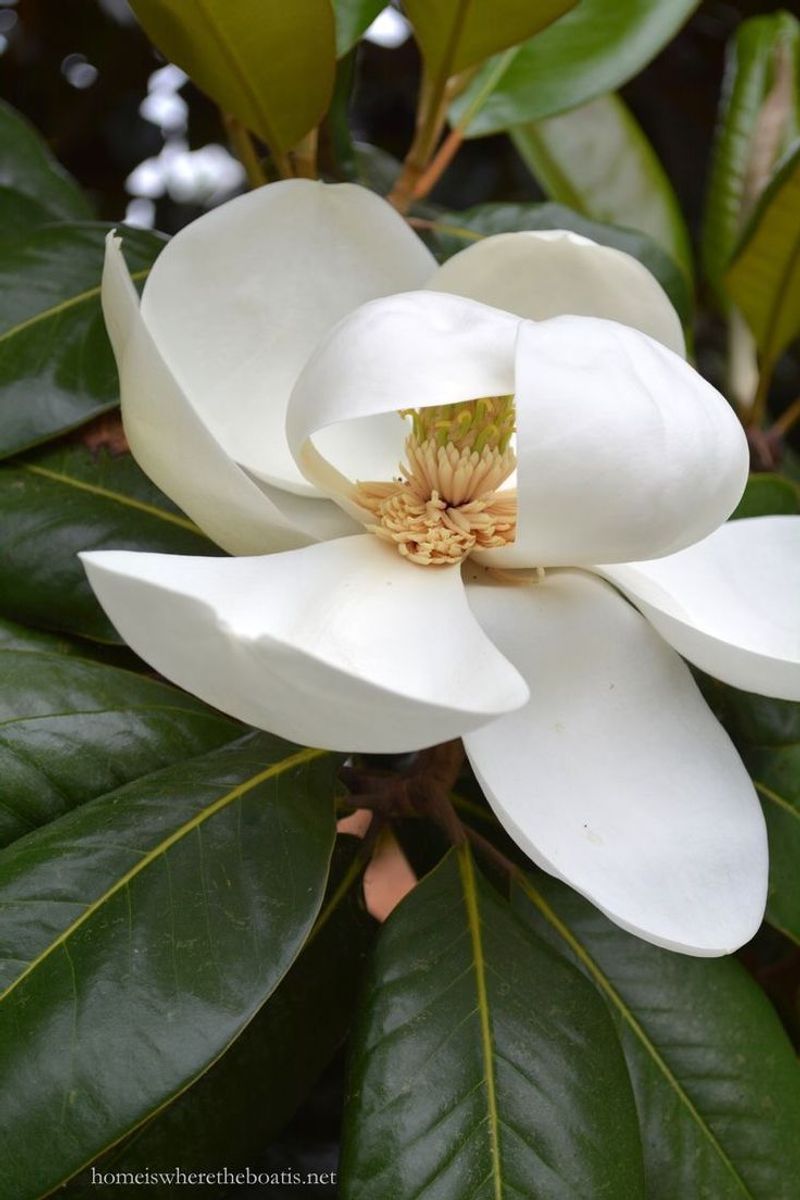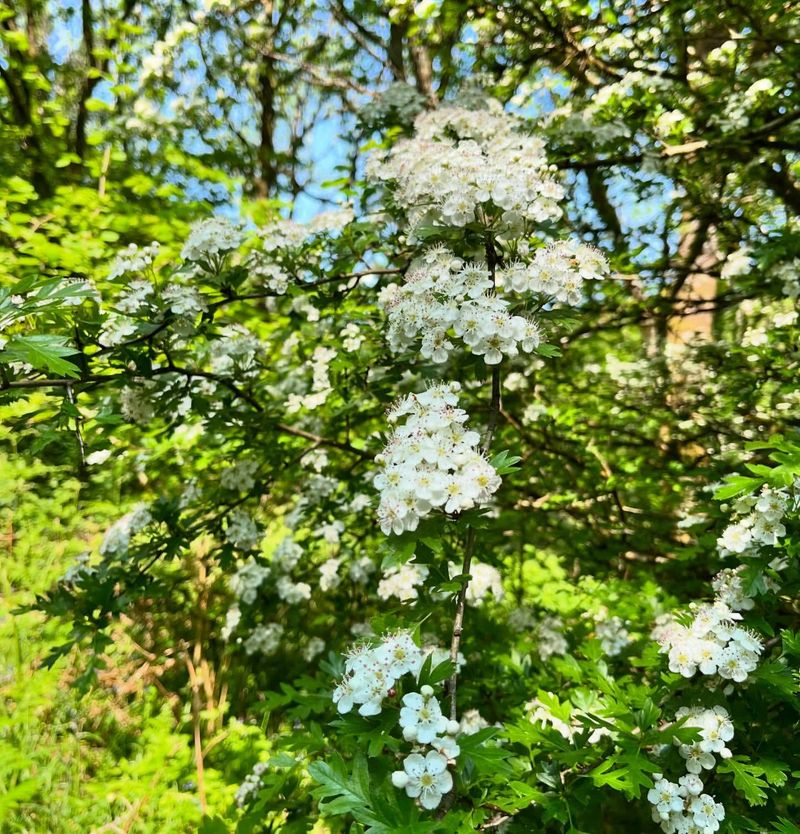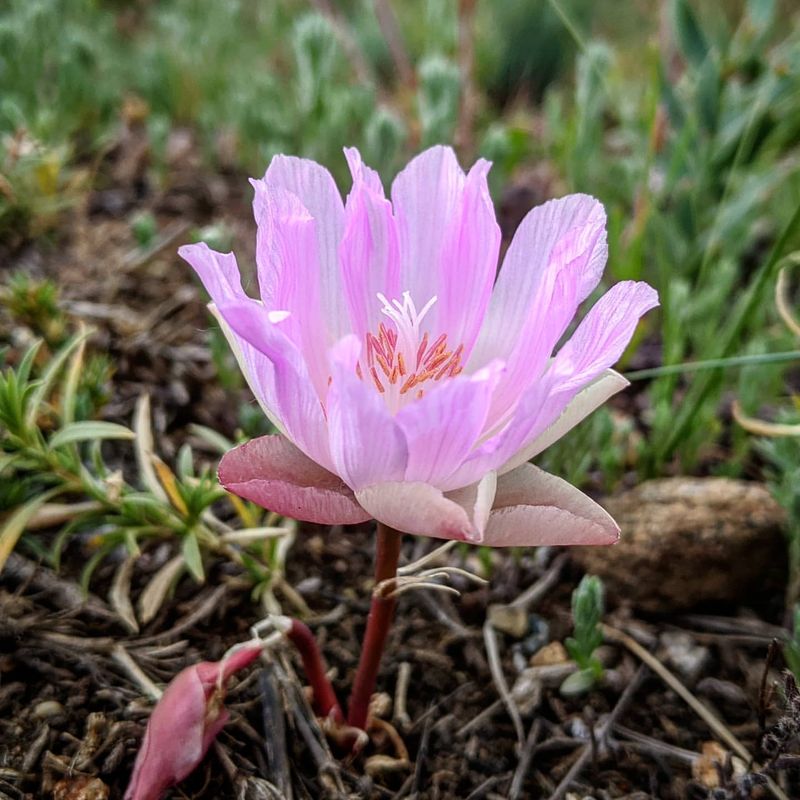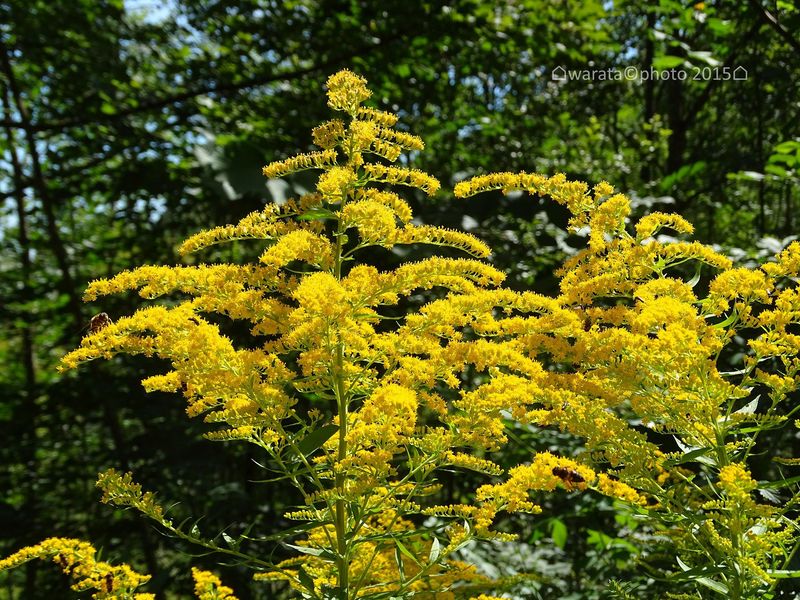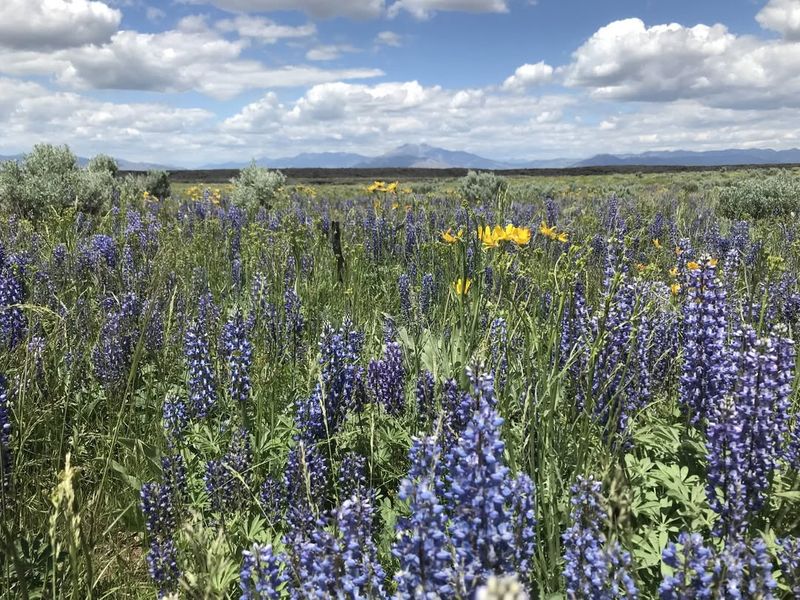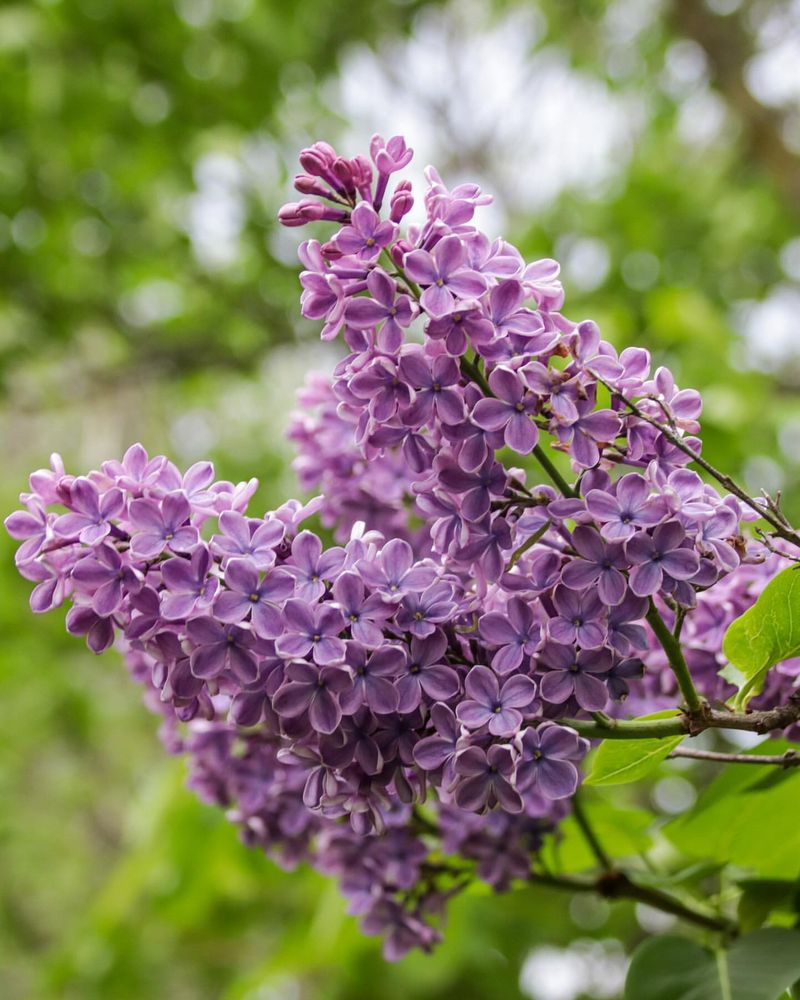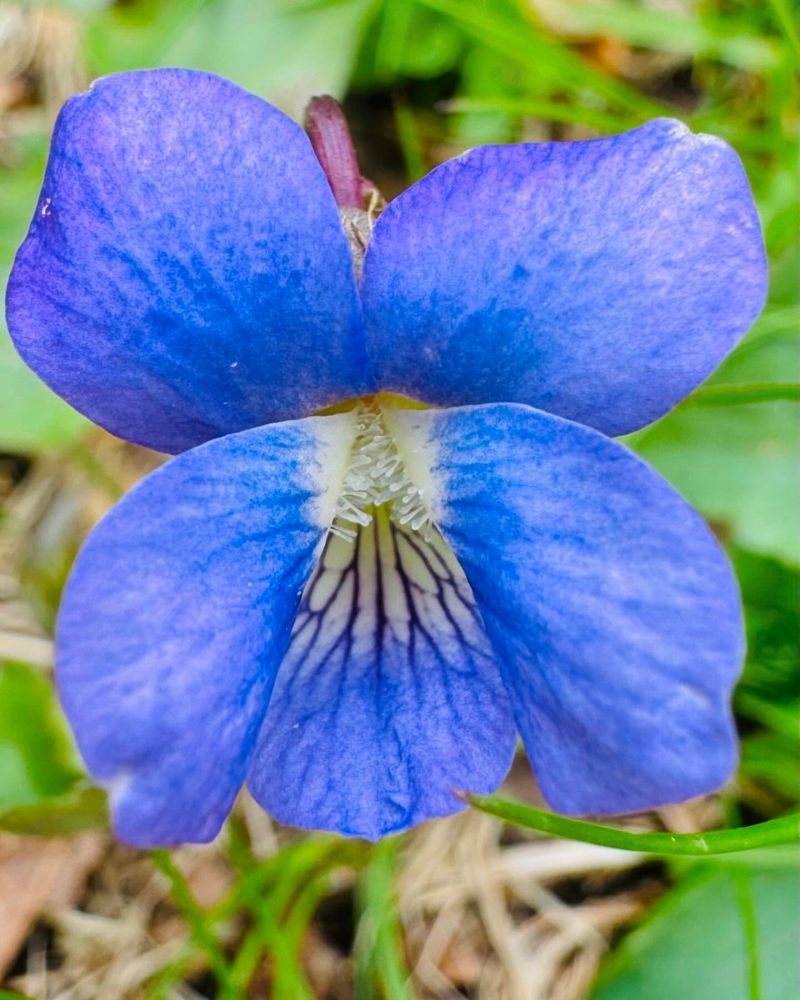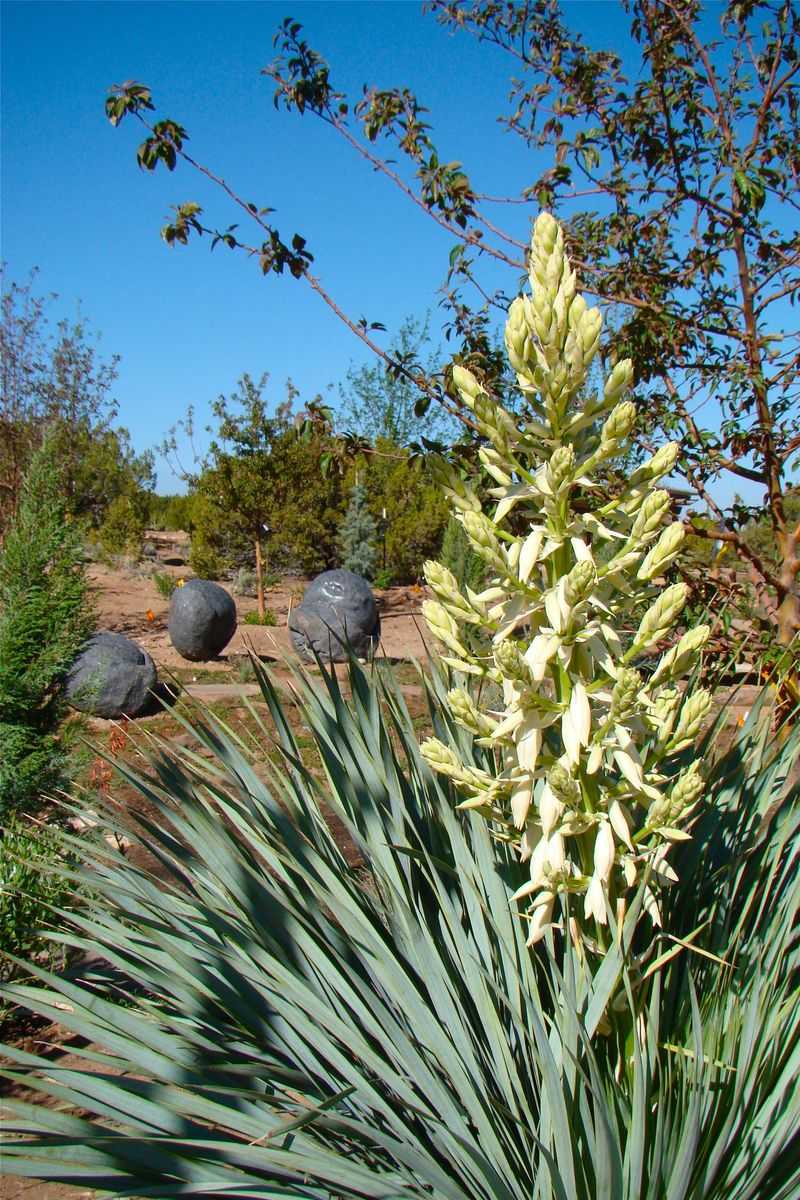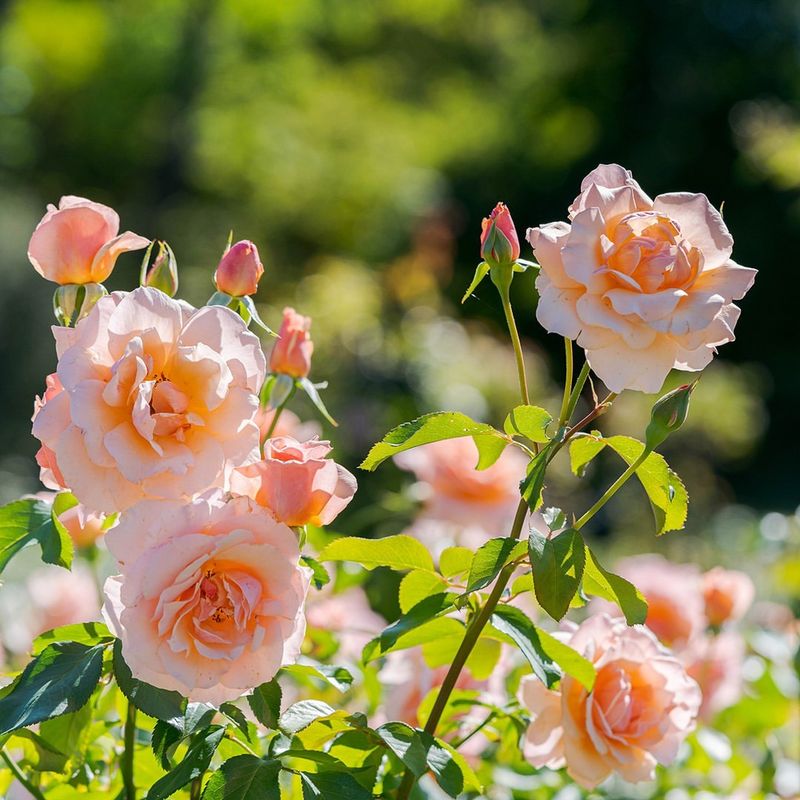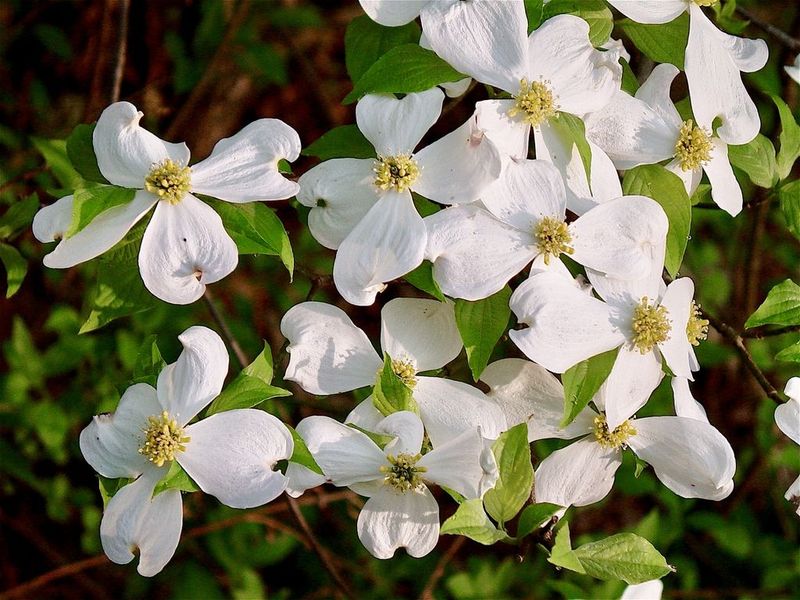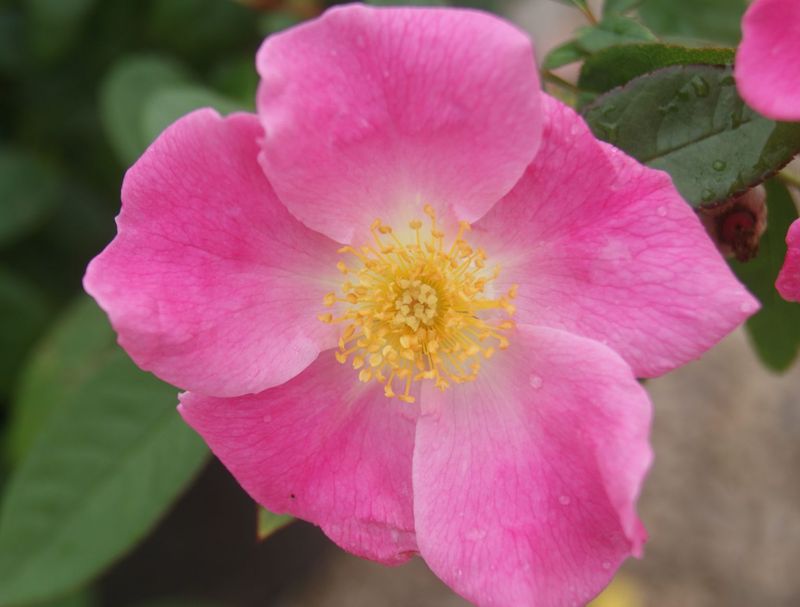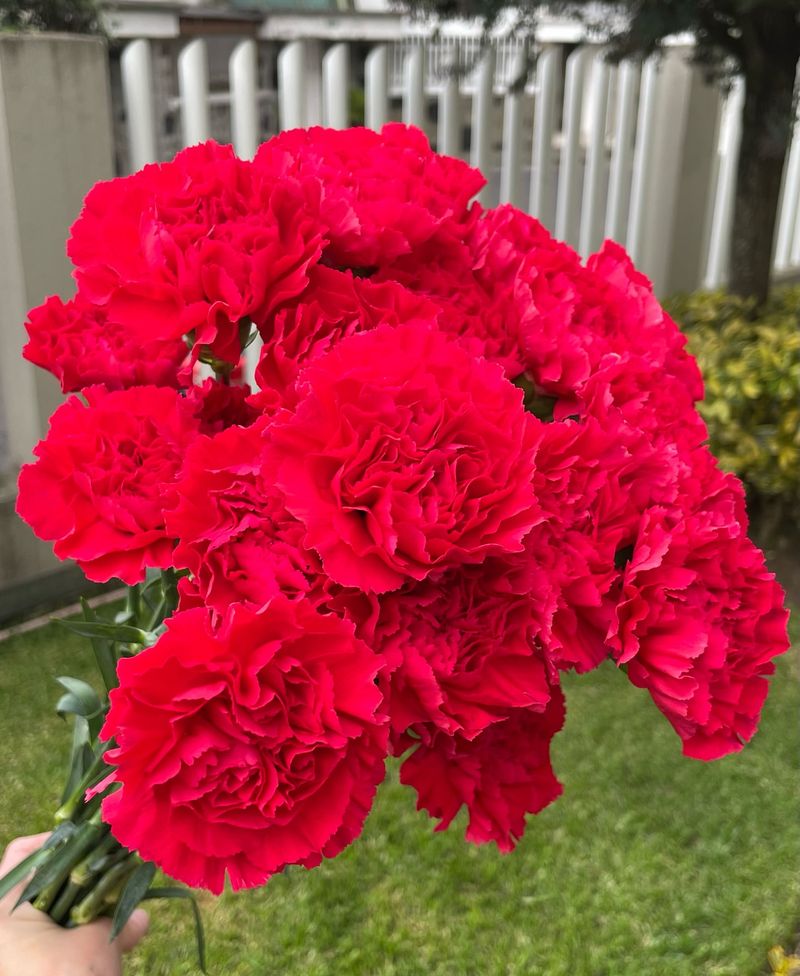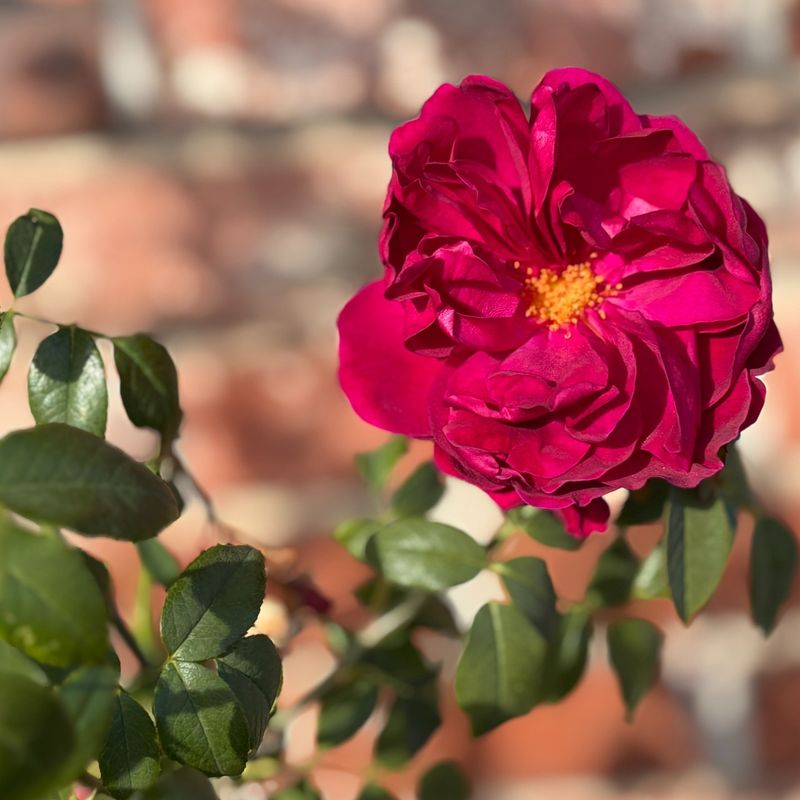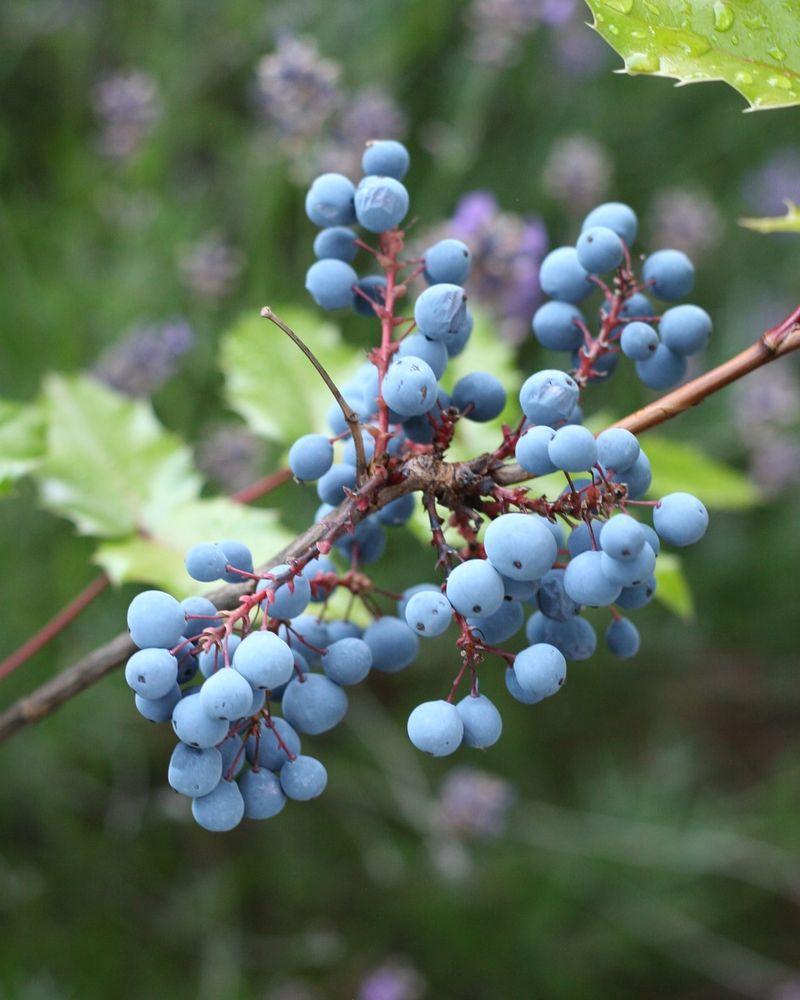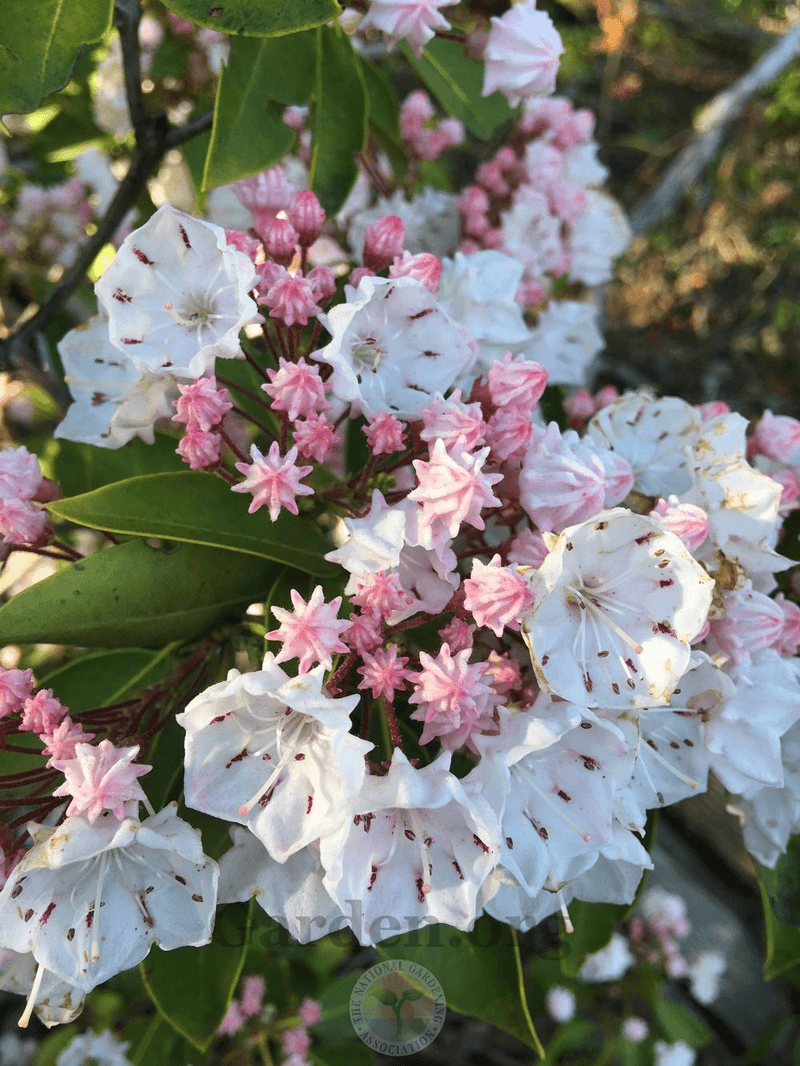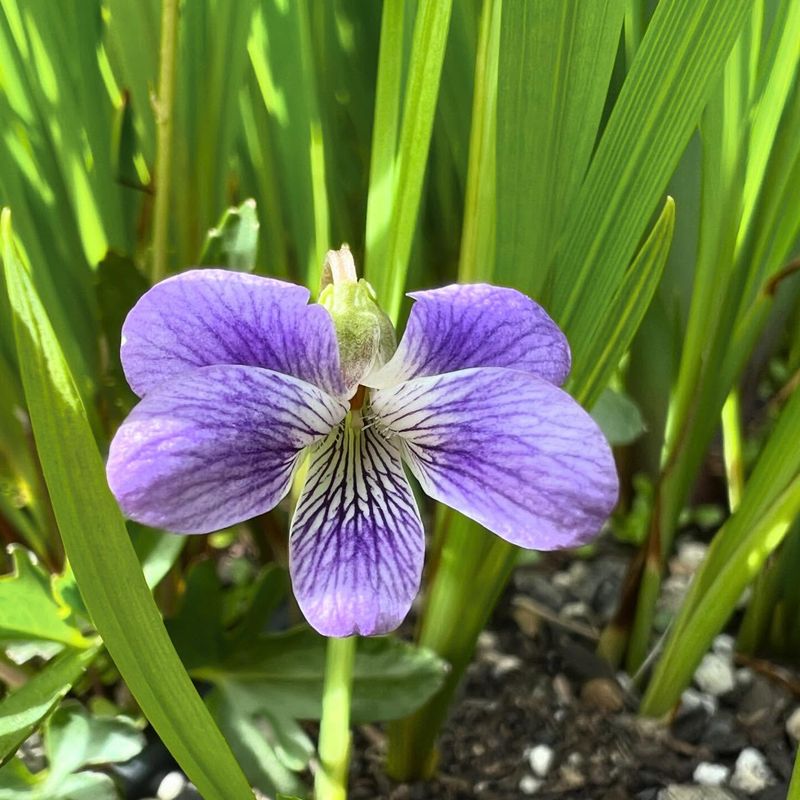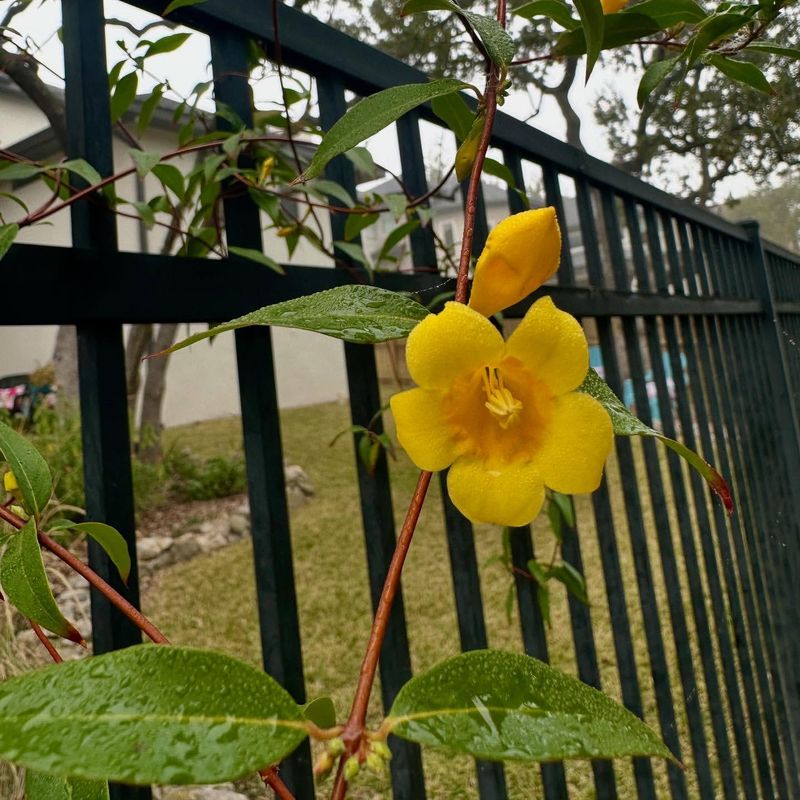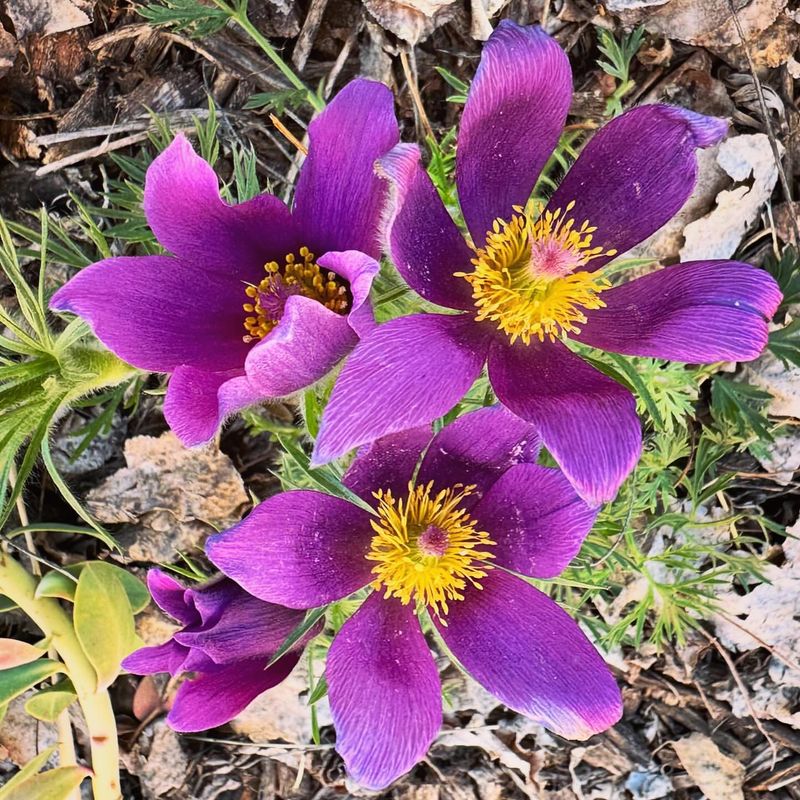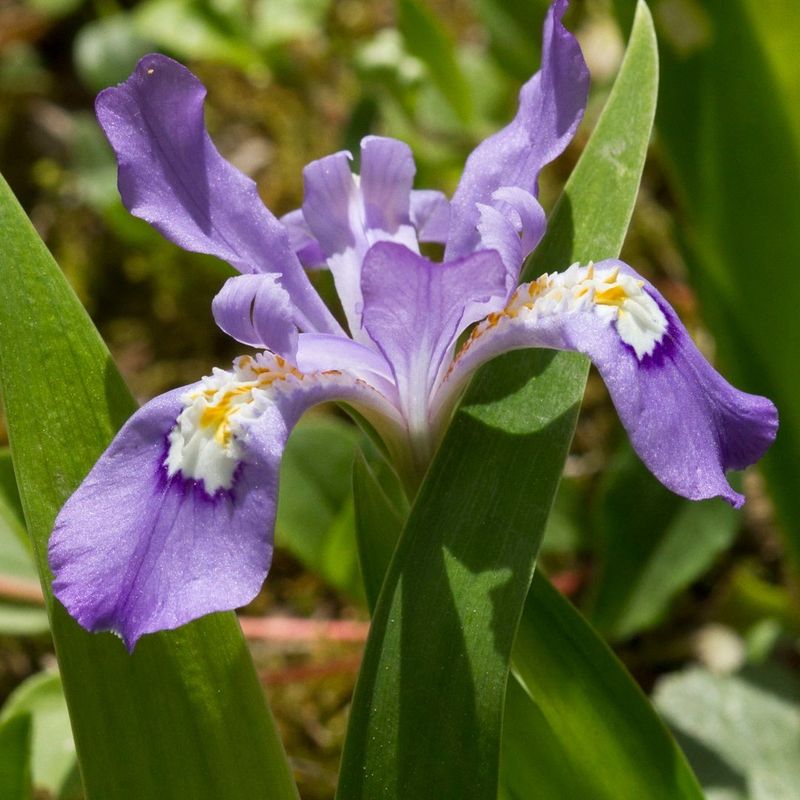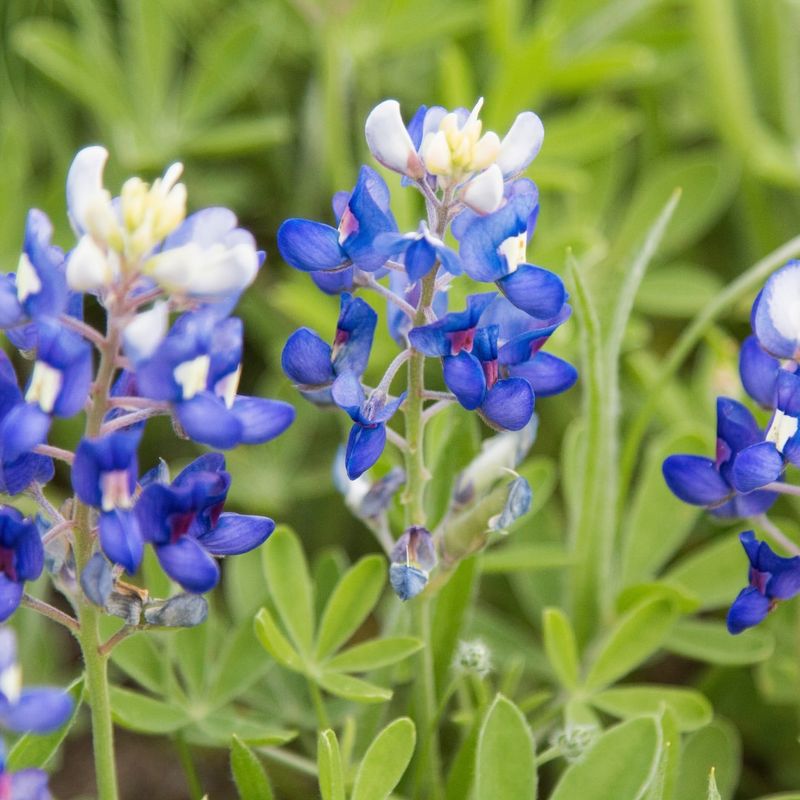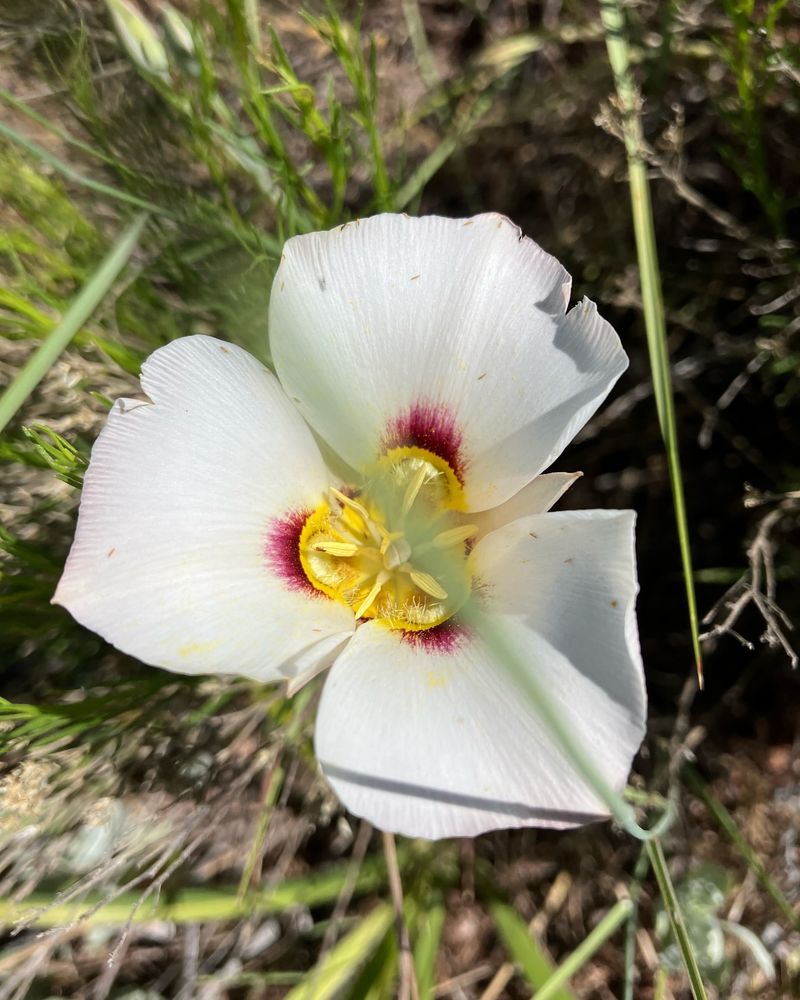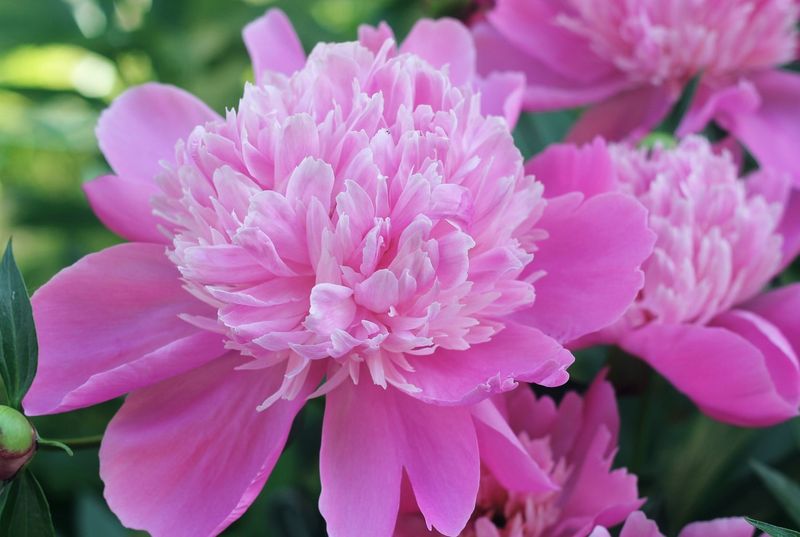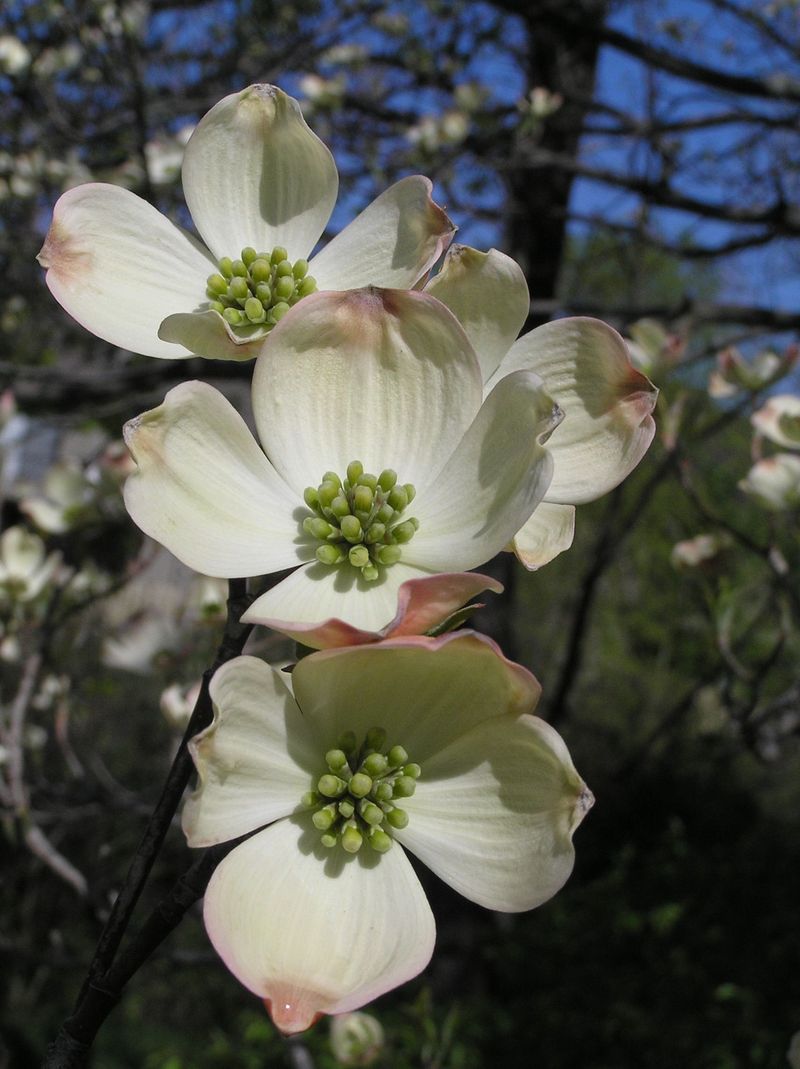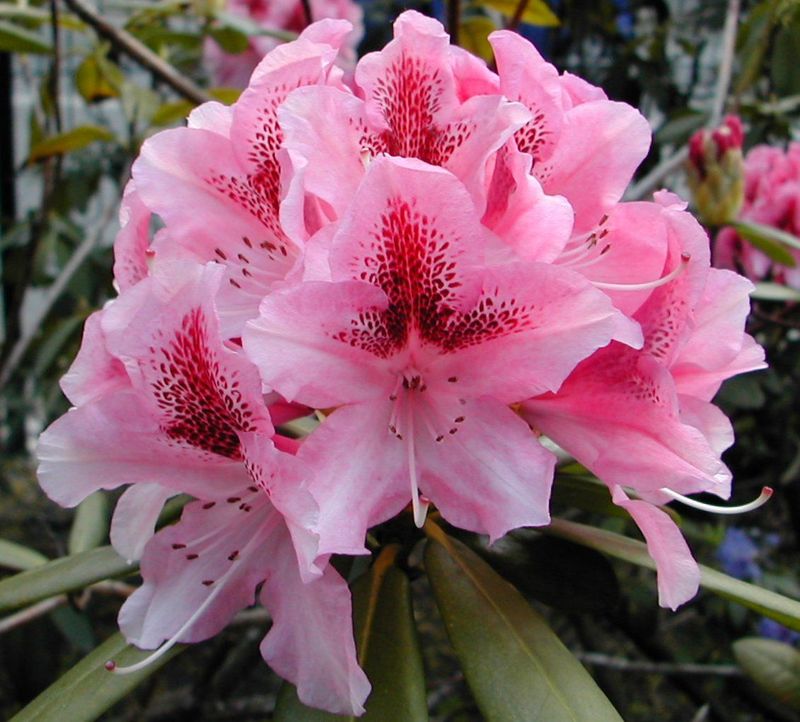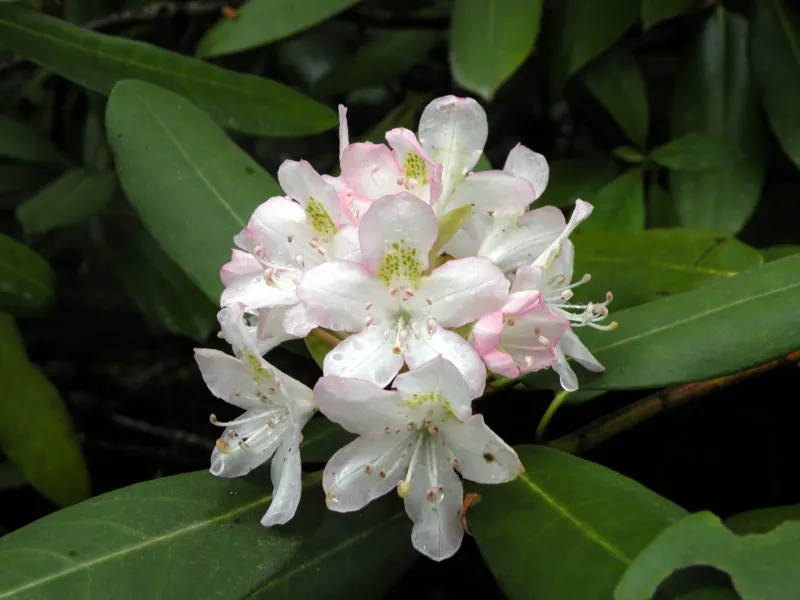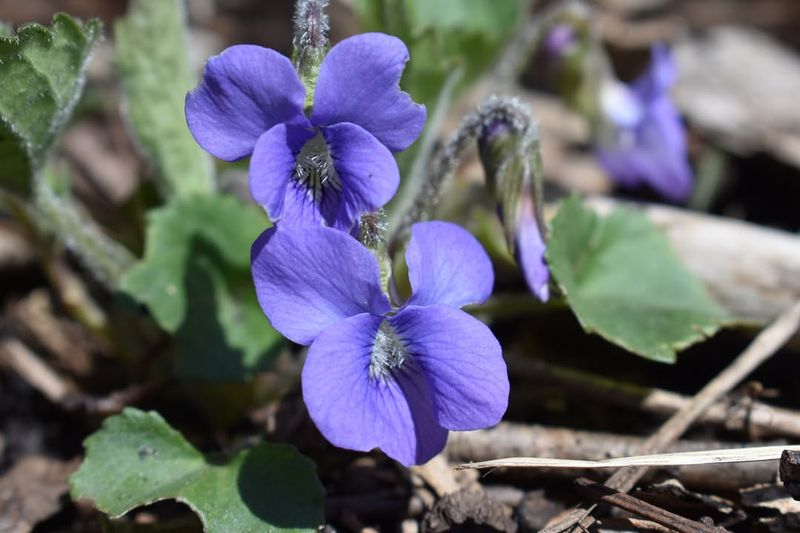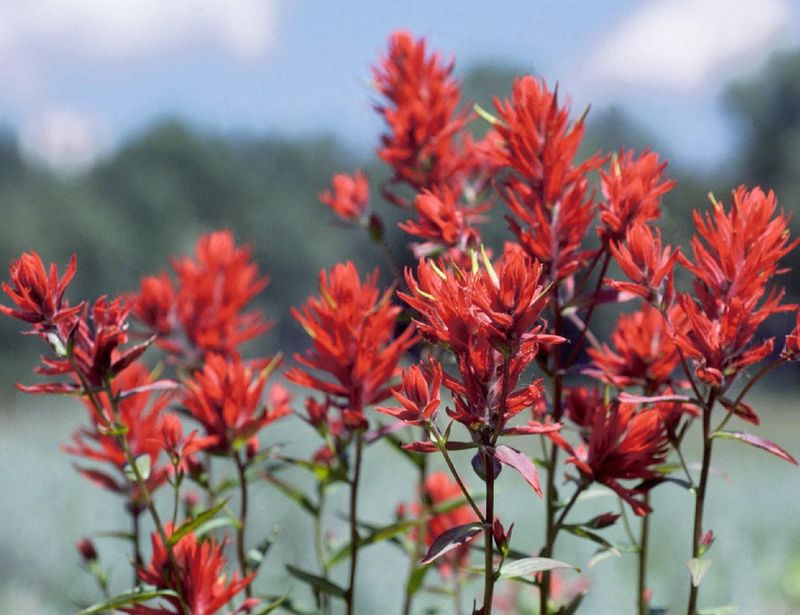America’s states boast a vibrant tapestry of floral emblems, each echoing tales of history, tradition, and botanical wonder. From the enchanting cherry blossoms of Washington, D.C. to the iconic saguaro cactus blossom of Arizona, these blooms represent more than beauty; they encapsulate the essence and heritage of their regions. Join us on a captivating journey through the U.S. as we explore the stories and legacies of each state’s chosen flower. With colorful narratives and intriguing histories, this guide promises to bring the charm and allure of American state flowers to life.
1. Camellia – Alabama
The Camellia, a symbol of southern charm, is the pride of Alabama. Introduced from Asia in the 18th century, it rapidly found its place in Southern gardens. Its vibrant blooms, ranging from white to deep red, are a testament to its diversity.
Chosen as the state flower in 1959, the Camellia’s allure lies in its evergreen leaves and delicate petals. It thrives in Alabama’s hospitable climate, bringing color to winter landscapes.
The flower’s history is intertwined with Alabama’s own, representing resilience and beauty, much like the state’s storied past.
2. Forget-Me-Not – Alaska
Alaska’s Forget-Me-Not, small yet mighty, captures the essence of the Last Frontier. Officially adopted in 1949, this flower’s name is a plea to remember the distant, majestic land it represents.
In Alaska’s brief summers, the Forget-Me-Not blooms profusely, painting meadows with its vivid blue hue. Its resilience mirrors the spirit of Alaskans, thriving despite challenging conditions.
This charming flower embodies the quiet beauty and enduring strength of Alaska, serving as a gentle reminder of the state’s natural wonders and pioneering spirit.
3. Saguaro Cactus Blossom – Arizona
The Saguaro Cactus Blossom is a striking emblem of Arizona. Blooming on the iconic Saguaro cactus, these creamy white flowers open under the desert moonlight. Adopted in 1931, they symbolize the wild beauty of the desert.
This blossom is integral to Arizona’s ecosystem, providing nectar for bats and birds. Its transient beauty is a reminder of the harsh yet enchanting desert landscape.
The Saguaro Blossom stands tall, much like the state itself, representing resilience and the unique charm of Arizona’s arid environment.
4. Apple Blossom – Arkansas
Arkansas chose the delicate Apple Blossom as its state flower in 1901. This choice reflects the state’s rich history in apple cultivation, once leading the nation in apple production.
Apple Blossoms, with their soft pink and white petals, herald the arrival of spring, infusing the air with their sweet fragrance. They mirror the agricultural roots and natural beauty of Arkansas.
This flower symbolizes growth and renewal, echoing the state’s resilience and its ever-evolving agricultural heritage.
5. California Poppy – California
The California Poppy, with its vibrant orange hue, is the Golden State’s floral emblem. Adopted in 1903, it embodies the spirit and beauty of California’s diverse landscapes.
These poppies blanket fields in spring, creating a breathtaking tapestry of color. They symbolize dreams and prosperity, echoing California’s allure as a land of opportunity.
The California Poppy’s resilience in harsh conditions reflects the state’s own toughness and enduring charm, making it a true symbol of the wild west.
6. Rocky Mountain Columbine – Colorado
Colorado’s Rocky Mountain Columbine is a symbol of high-altitude beauty. Adopted in 1899, this flower graces the rugged mountain meadows with its elegant blue and white blooms.
Its unique shape and color have inspired admiration and protectiveness among Coloradans, leading to strict preservation laws.
The Columbine represents the state’s natural grandeur and the pioneering spirit of those who explored the rugged Rockies, capturing hearts with its distinct elegance.
7. Mountain Laurel – Connecticut
Connecticut’s state flower, the Mountain Laurel, is a treasure of the eastern woodlands. Adopted in 1907, its intricate blooms range from white to pink, adorning the state’s forests with beauty.
Mountain Laurel is celebrated for its striking, star-shaped flowers and glossy leaves, often found along hiking trails. It symbolizes strength and perseverance, much like the spirit of Connecticut’s residents.
This flower’s charm and resilience make it a beloved symbol of the state’s natural heritage and enduring beauty.
8. Peach Blossom – Delaware
Delaware’s Peach Blossom, adopted in 1953, recalls the state’s storied past as a leader in peach production. These delicate pink flowers herald the arrival of spring, infusing the air with their fragrance.
The Peach Blossom represents the agricultural bounty and rich history of Delaware, once dubbed the ‘Peach State’ in the 19th century.
Today, this flower stands as a symbol of growth and renewal, reflecting the state’s resilience and ongoing commitment to its agricultural roots.
9. Orange Blossom – Florida
The Orange Blossom, with its intoxicating fragrance, is Florida’s floral emblem. Adopted in 1909, it speaks to the state’s rich citrus heritage, essential to Florida’s economy and culture.
These delicate white blossoms symbolize prosperity and abundance, much like the state’s fruitful groves. Their sweet scent perfumes the air, captivating locals and visitors alike.
The Orange Blossom’s beauty and significance continue to embody the vibrant spirit and sunny charm of the Sunshine State.
10. Cherokee Rose – Georgia
Georgia’s Cherokee Rose, adopted in 1916, is steeped in symbolism and legend. This white bloom with a golden center honors the resilience of the Cherokee people and their history.
Found throughout Georgia’s landscapes, the Cherokee Rose is celebrated for its beauty and hardiness. It represents the enduring spirit and rich cultural heritage of the state.
This iconic flower continues to captivate with its elegance and historical significance, making it a beloved symbol of Georgia.
11. Hibiscus – Hawaii
Hawaii’s Hibiscus, known as the pua aloalo, is a vibrant representation of the islands’ tropical allure. Adopted in 1988, its bold colors reflect the natural beauty and rich culture of Hawaii.
The Hibiscus thrives in the lush Hawaiian climate, adorning gardens and landscapes with its striking petals. It symbolizes hospitality and the spirit of aloha, central to Hawaiian life.
This flower’s vivid presence embodies the warmth and enchantment of Hawaii, captivating all who encounter its tropical charm.
12. Syringa – Idaho
Idaho’s Syringa, chosen as the state flower in 1931, is known for its fragrant, creamy white blooms. Often called the mock orange, its scent is reminiscent of sweet citrus.
The Syringa grows abundantly in Idaho’s wild settings, symbolizing the state’s natural beauty and rugged landscapes. Its blossoms herald the arrival of spring, marking a time of renewal and hope.
This flower captures Idaho’s spirit, representing both the allure and resilience of its diverse ecosystems.
13. Violet – Illinois
Illinois adopted the demure Violet as its state flower in 1908. These small, purple blooms symbolize modesty and simplicity, much like the state’s agricultural roots.
Violets thrive in Illinois’ varied climate, gracing gardens and wild areas alike with their charm. They represent the natural beauty and quiet strength of the state’s landscapes and communities.
This flower’s understated elegance continues to capture the hearts of Illinoisans, standing as a symbol of beauty in simplicity.
14. Peony – Indiana
Indiana’s Peony, adopted in 1957, is celebrated for its lush, full blooms. Known for their vibrant colors and sweet fragrance, Peonies are a favorite in gardens across the state.
This flower symbolizes prosperity and good fortune, reflecting Indiana’s agricultural heritage and community spirit. Its presence marks the arrival of spring, bringing color and joy to landscapes.
The Peony’s beauty and enduring charm make it a beloved emblem of Indiana, capturing the state’s warmth and welcoming nature.
15. Wild Rose – Iowa
Iowa’s Wild Rose, adopted in 1897, is cherished for its delicate beauty and resilience. These pink petals bloom along roadsides and fields, adding charm to the Iowa landscape.
The Wild Rose symbolizes love and devotion, reflecting the strong community ties within the state. Its presence is a reminder of nature’s beauty and the simple joys it offers.
This flower continues to inspire admiration, capturing the spirit and pride of Iowa’s residents with its timeless elegance.
16. Sunflower – Kansas
Kansas proudly adopted the Sunflower as its state flower in 1903. These towering blooms, with their vibrant yellow petals and dark centers, are a symbol of the Sunflower State.
Sunflowers thrive in Kansas’ warm climate, their faces tracking the sun across the sky. They represent optimism, strength, and the state’s agricultural prowess.
This iconic flower embodies the spirit of Kansas, capturing the essence of its vast prairies and sunny disposition.
17. Goldenrod – Kentucky
Kentucky’s Goldenrod, adopted in 1926, is a symbol of resilience and beauty. Its bright yellow blooms light up the state’s landscapes throughout the late summer and fall.
Goldenrod thrives in Kentucky’s fertile fields and meadows, representing the state’s agricultural richness and natural beauty. It is often seen as a sign of good fortune and prosperity.
This flower continues to charm with its vibrant color and hardy nature, making it a beloved symbol of Kentucky’s enduring spirit.
18. Magnolia – Louisiana
Louisiana’s Magnolia, adopted in 1900, is an emblem of southern elegance and charm. These large, fragrant blooms are a distinctive feature of the state’s landscapes.
Magnolias thrive in Louisiana’s warm, humid climate, symbolizing beauty and resilience. Their presence signifies the state’s rich cultural heritage and natural allure.
This flower’s dignified beauty continues to captivate, making it a beloved symbol of Louisiana’s grace and southern hospitality.
19. White Pine Cone and Tassel – Maine
Maine’s unique choice of the White Pine Cone and Tassel as its state flower reflects the state’s rich forestry heritage. Adopted in 1895, this emblem symbolizes strength and endurance.
The White Pine is a vital part of Maine’s ecosystem and history, representing the state’s commitment to conservation and natural beauty.
This emblem serves as a reminder of Maine’s majestic landscapes and the enduring spirit of its people, capturing the essence of the Pine Tree State.
20. Black-Eyed Susan – Maryland
Maryland’s Black-Eyed Susan, adopted in 1918, is a cheerful symbol of the state. These bright yellow flowers with dark centers bloom in the summer, adding color to Maryland’s landscapes.
They symbolize justice and truth, reflecting the state’s values and the integrity of its residents. Black-Eyed Susans thrive across Maryland, from fields to gardens, embodying resilience.
This flower’s vibrant presence and charm make it a cherished emblem of Maryland, capturing the state’s sunny spirit and natural beauty.
21. Mayflower – Massachusetts
Massachusetts’ state flower, the Mayflower, is a nod to the state’s colonial history. Adopted in 1918, it symbolizes the Pilgrims and their enduring legacy.
These delicate pink and white blossoms herald the arrival of spring, often peeking through the last winter snow. The Mayflower represents perseverance and hope, much like the early settlers.
This flower’s understated beauty and historical significance continue to captivate, making it a beloved symbol of Massachusetts’ rich past.
22. Apple Blossom – Michigan
Michigan selected the Apple Blossom as its state flower in 1897. This choice reflects the state’s rich history in apple production, being a leading producer in the nation.
The delicate pink and white petals of Apple Blossoms signify beauty and the arrival of spring, filling the air with their sweet scent.
They embody growth and prosperity, capturing the spirit of Michigan’s agricultural heritage and its natural beauty.
23. Pink and White Lady’s Slipper – Minnesota
Minnesota’s Pink and White Lady’s Slipper, adopted in 1967, is a rare beauty. This orchid-like flower blooms in the state’s northern forests, captivating with its striking pink and white petals.
It symbolizes rarity and grace, mirroring Minnesota’s pristine wilderness and commitment to conservation.
This flower continues to enchant, representing the state’s dedication to preserving its natural treasures and the beauty that lies within.
24. Magnolia – Mississippi
Mississippi’s Magnolia, adopted in 1952, is a symbol of southern grace and beauty. These fragrant blooms are a prominent feature of the state’s landscapes, thriving in its warm climate.
The Magnolia represents Mississippi’s rich cultural heritage and natural allure, embodying resilience and charm.
This flower’s enduring beauty and elegance continue to inspire, making it a cherished emblem of Mississippi’s southern hospitality and serene landscapes.
25. Hawthorn – Missouri
Missouri’s Hawthorn, adopted in 1923, is a symbol of strength and resilience. These hardy trees bloom with clusters of white flowers, adding beauty to the state’s rural landscapes.
Hawthorn trees have deep roots in Missouri’s history, representing growth and perseverance. Their presence marks the arrival of spring, bringing life and color to the countryside.
This flower continues to inspire with its resilience and charm, capturing the spirit of Missouri’s landscapes and people.
26. Bitterroot – Montana
Montana’s Bitterroot, adopted in 1895, is a symbol of resilience and beauty. These delicate pink flowers bloom in harsh environments, thriving in the state’s rocky terrains.
The Bitterroot represents Montana’s rugged landscapes and the enduring spirit of its people, capturing the essence of the Treasure State.
Its beauty and toughness continue to inspire, making it a cherished emblem of Montana’s natural heritage and pioneering spirit.
27. Goldenrod – Nebraska
Nebraska’s Goldenrod, adopted in 1895, is a symbol of resilience and beauty. Its bright yellow blooms light up the state’s landscapes throughout the late summer and fall.
Goldenrod thrives in Nebraska’s fertile fields and meadows, representing the state’s agricultural richness and natural beauty. It is often seen as a sign of good fortune and prosperity.
This flower continues to charm with its vibrant color and hardy nature, making it a beloved symbol of Nebraska’s enduring spirit.
28. Sagebrush – Nevada
Nevada’s Sagebrush, adopted in 1917, is a symbol of the state’s rugged beauty and resilience. This hardy plant thrives in Nevada’s arid landscapes, representing the unique charm of the desert.
Sagebrush embodies the pioneer spirit, reflecting the state’s history and the tenacity of its people. Its silvery leaves and aromatic scent capture the essence of Nevada’s wild spaces.
This plant continues to inspire, serving as a reminder of the beauty and resilience of Nevada’s desert environments.
29. Purple Lilac – New Hampshire
New Hampshire’s Purple Lilac, adopted in 1919, is a symbol of beauty and nostalgia. These fragrant blooms grace gardens and landscapes, heralding the arrival of spring.
The Lilac represents the state’s agricultural heritage and the simple joys of nature. Its presence captures the essence of New Hampshire’s charming communities and enduring spirit.
This flower continues to enchant with its fragrant beauty, making it a beloved emblem of New Hampshire’s natural elegance.
30. Violet – New Jersey
New Jersey adopted the modest Violet as its state flower in 1971. These small, purple blooms symbolize modesty and simplicity, much like the state’s agricultural roots.
Violets thrive in New Jersey’s varied climate, gracing gardens and wild areas alike with their charm. They represent the natural beauty and quiet strength of the state’s landscapes and communities.
This flower’s understated elegance continues to capture the hearts of New Jerseyans, standing as a symbol of beauty in simplicity.
31. Yucca – New Mexico
New Mexico’s Yucca, adopted in 1927, is a symbol of resilience and beauty. This hardy plant thrives in the state’s arid landscapes, representing the unique charm of the desert.
Yucca plants are celebrated for their striking appearance and adaptability, embodying the spirit of New Mexico’s wild spaces. Their tall flowering stalks capture the essence of the state’s rugged beauty.
This plant continues to inspire with its resilience and elegance, making it a cherished emblem of New Mexico’s natural heritage.
32. Rose – New York
New York’s Rose, adopted in 1955, is a symbol of elegance and timeless beauty. These classic blooms are celebrated for their vibrant colors and sweet fragrance.
The Rose represents New York’s rich cultural heritage and the diverse beauty of its landscapes. Its presence captures the essence of the state’s grandeur and enduring spirit.
This flower continues to inspire with its elegance and charm, making it a beloved emblem of New York’s vibrant culture and history.
33. Dogwood – North Carolina
North Carolina’s Dogwood, adopted in 1941, is a symbol of springtime beauty and renewal. These trees bloom with clusters of white flowers, adding charm to the state’s landscapes.
The Dogwood represents North Carolina’s natural beauty and the resilience of its communities. Its presence marks the arrival of spring, bringing life and color to the countryside.
This flower continues to inspire with its delicate beauty and charm, capturing the essence of North Carolina’s vibrant spirit.
34. Wild Prairie Rose – North Dakota
North Dakota’s Wild Prairie Rose, adopted in 1907, is cherished for its delicate beauty and resilience. These vibrant pink petals bloom across the state’s prairies, adding charm to the landscape.
The Wild Prairie Rose symbolizes love and devotion, reflecting the strong community ties within the state. Its presence is a reminder of nature’s beauty and the simple joys it offers.
This flower continues to inspire admiration, capturing the spirit and pride of North Dakota’s residents with its timeless elegance.
35. Scarlet Carnation – Ohio
Ohio’s Scarlet Carnation, adopted in 1904, is a vibrant symbol of the state. These red blooms represent love and admiration, reflecting Ohio’s rich cultural heritage.
The Carnation thrives in Ohio’s varied climate, gracing gardens and landscapes with its bold presence. It symbolizes passion and dedication, much like the state’s industrious spirit.
This flower continues to captivate with its vibrant color and charm, making it a beloved emblem of Ohio’s enduring pride and vitality.
36. Oklahoma Rose – Oklahoma
Oklahoma’s state flower, the Oklahoma Rose, exudes elegance and charm. Adopted in 2004, its deep red petals reflect the state’s vibrant spirit and cultural richness.
The Oklahoma Rose thrives in the state’s challenging climates, symbolizing resilience and beauty. Its presence in gardens and landscapes captures the essence of Oklahoma’s pioneering heritage.
This flower continues to inspire admiration, representing the pride and passion of Oklahoma’s people with its timeless beauty.
37. Oregon Grape – Oregon
Oregon’s state flower, the Oregon Grape, is known for its hardy nature and striking appearance. Adopted in 1899, it blooms with clusters of yellow flowers that stand out against its dark, glossy leaves.
The Oregon Grape symbolizes the state’s diverse landscapes and pioneering spirit. Its presence reflects the resilience and beauty of Oregon’s natural environment.
This flower continues to captivate with its unique charm, making it a beloved emblem of Oregon’s rich natural heritage.
38. Mountain Laurel – Pennsylvania
Pennsylvania’s Mountain Laurel, adopted in 1933, is a beloved symbol of the state. These intricate blooms, ranging from white to pink, adorn the forests with beauty.
Mountain Laurel is celebrated for its striking, star-shaped flowers and glossy leaves, often found along hiking trails. It symbolizes strength and perseverance, much like the spirit of Pennsylvania’s residents.
This flower’s charm and resilience make it a cherished symbol of the state’s natural heritage and enduring beauty.
39. Violet – Rhode Island
Rhode Island adopted the modest Violet as its state flower in 1968. These small, purple blooms symbolize modesty and simplicity, much like the state’s agricultural roots.
Violets thrive in Rhode Island’s varied climate, gracing gardens and wild areas alike with their charm. They represent the natural beauty and quiet strength of the state’s landscapes and communities.
This flower’s understated elegance continues to capture the hearts of Rhode Islanders, standing as a symbol of beauty in simplicity.
40. Yellow Jessamine – South Carolina
South Carolina’s Yellow Jessamine, adopted in 1924, is a symbol of beauty and grace. These fragrant, yellow vines bloom throughout the state, adding charm to the landscapes.
Yellow Jessamine represents the state’s natural beauty and sunny disposition, embodying resilience and charm. Its presence captures the essence of South Carolina’s vibrant spirit.
This flower continues to inspire with its delicate beauty and intoxicating fragrance, making it a cherished emblem of South Carolina.
41. Pasque Flower – South Dakota
South Dakota’s Pasque Flower, adopted in 1903, is a symbol of springtime renewal. These delicate lavender blooms are among the first to appear after the winter thaw, often peeking through the snow.
The Pasque Flower represents hope and new beginnings, much like the spirit of South Dakota’s residents. Its presence marks the transition from winter to spring, bringing color to the prairies.
This flower’s resilience and beauty continue to inspire, making it a cherished emblem of South Dakota’s natural wonders.
42. Iris – Tennessee
Tennessee’s Iris, adopted in 1933, is celebrated for its vibrant beauty and elegance. These striking flowers are a favorite in gardens, thriving in the state’s varied climate.
The Iris symbolizes wisdom and valor, reflecting Tennessee’s rich history and cultural heritage. Its presence adds color and grace to the landscapes, capturing the essence of the state.
This flower continues to inspire with its bold beauty and charm, making it a beloved emblem of Tennessee’s enduring spirit.
43. Bluebonnet – Texas
Texas’ Bluebonnet, adopted in 1901, is a symbol of the Lone Star State’s beauty and resilience. These blue blooms blanket fields in the spring, creating breathtaking vistas.
The Bluebonnet represents the state’s pioneering spirit and natural allure, thriving in Texas’ diverse climates. Its presence captures the essence of the state’s vast landscapes and vibrant culture.
This flower’s striking beauty continues to inspire admiration, making it a cherished emblem of Texas’ pride and passion.
44. Sego Lily – Utah
Utah’s Sego Lily, adopted in 1911, is a symbol of beauty and resilience. These delicate white flowers bloom in the state’s arid landscapes, thriving in harsh conditions.
The Sego Lily represents the state’s pioneer heritage, reflecting the resourcefulness and determination of its early settlers. Its presence captures the essence of Utah’s natural beauty and spirit.
This flower continues to inspire with its elegance and toughness, making it a cherished emblem of Utah’s enduring legacy.
45. Red Clover – Vermont
Vermont’s Red Clover, adopted in 1894, is a symbol of beauty and resilience. These vibrant pink flowers bloom across the state’s verdant fields, adding charm to the landscape.
The Red Clover represents love and devotion, reflecting the strong community ties within the state. Its presence is a reminder of nature’s beauty and the simple joys it offers.
This flower continues to inspire admiration, capturing the spirit and pride of Vermont’s residents with its timeless elegance.
46. Dogwood – Virginia
Virginia’s Dogwood, adopted in 1918, is a symbol of springtime beauty and renewal. These trees bloom with clusters of white flowers, adding charm to the state’s landscapes.
The Dogwood represents Virginia’s natural beauty and the resilience of its communities. Its presence marks the arrival of spring, bringing life and color to the countryside.
This flower continues to inspire with its delicate beauty and charm, capturing the essence of Virginia’s vibrant spirit.
47. Coast Rhododendron – Washington
Washington’s Coast Rhododendron, adopted in 1959, is a symbol of beauty and resilience. These pink blooms grace the state’s forests, adding color and charm to the landscape.
The Rhododendron represents the natural beauty and diversity of Washington’s ecosystems, thriving in its varied climates. Its presence captures the essence of the state’s vibrant spirit.
This flower continues to enchant with its striking beauty and resilience, making it a beloved emblem of Washington’s natural heritage.
48. Rosebay Rhododendron – West Virginia
West Virginia’s Rosebay Rhododendron, adopted in 1903, is a symbol of beauty and strength. These large pink blossoms thrive in the state’s mountainous landscapes, adding charm to the scenery.
The Rhododendron represents West Virginia’s wild beauty and resilient spirit, thriving in the diverse climates of the region. Its presence captures the essence of the state’s natural allure.
This flower continues to inspire with its elegance and toughness, making it a cherished emblem of West Virginia’s enduring pride.
49. Wood Violet – Wisconsin
Wisconsin adopted the modest Wood Violet as its state flower in 1949. These small, purple blooms symbolize modesty and simplicity, much like the state’s agricultural roots.
Violets thrive in Wisconsin’s varied climate, gracing gardens and wild areas alike with their charm. They represent the natural beauty and quiet strength of the state’s landscapes and communities.
This flower’s understated elegance continues to capture the hearts of Wisconsinites, standing as a symbol of beauty in simplicity.
50. Indian Paintbrush – Wyoming
Wyoming’s Indian Paintbrush, adopted in 1917, is a symbol of beauty and resilience. These vibrant red flowers bloom across the state’s open plains, adding color to the landscape.
The Indian Paintbrush represents Wyoming’s wild beauty and pioneering spirit, thriving in harsh climates. Its presence captures the essence of the state’s vast landscapes and rugged charm.
This flower continues to inspire admiration, making it a cherished emblem of Wyoming’s natural heritage and enduring pride.

